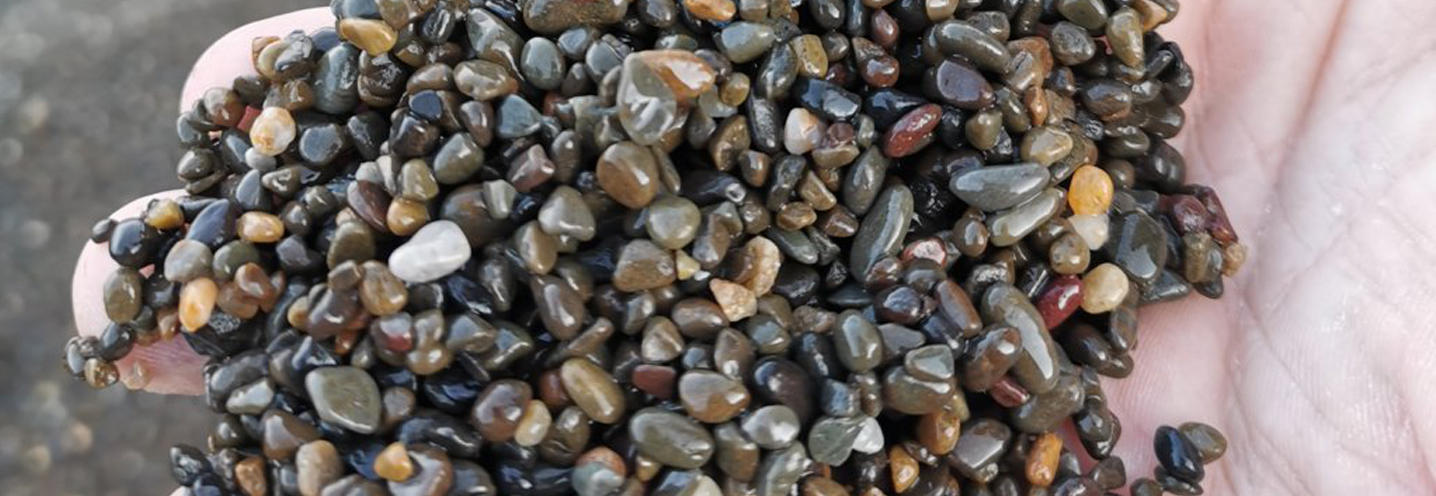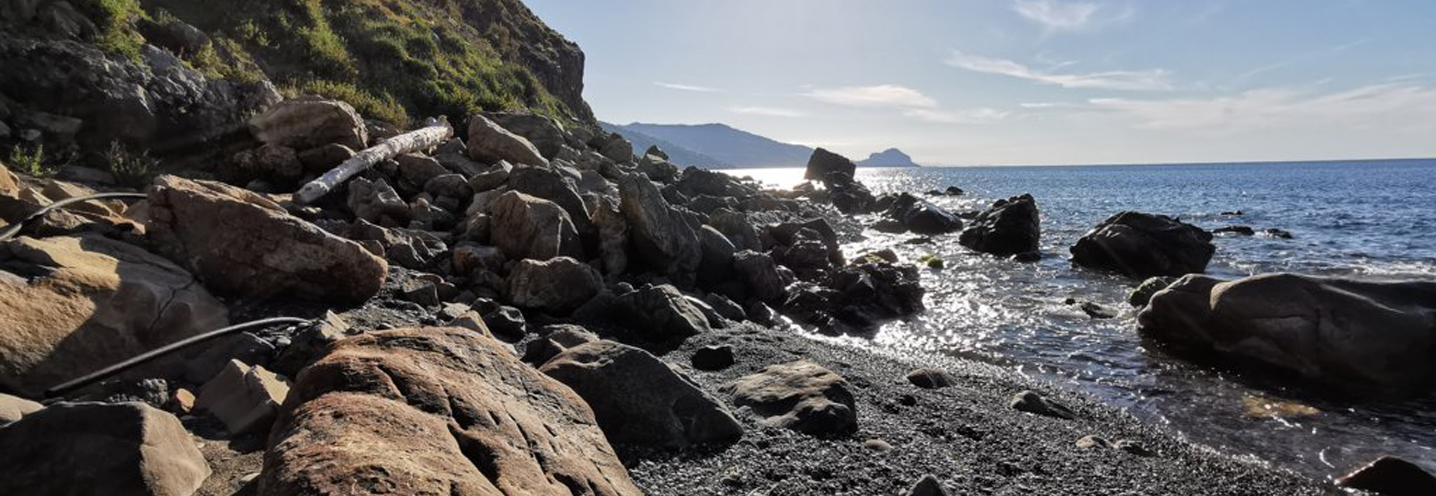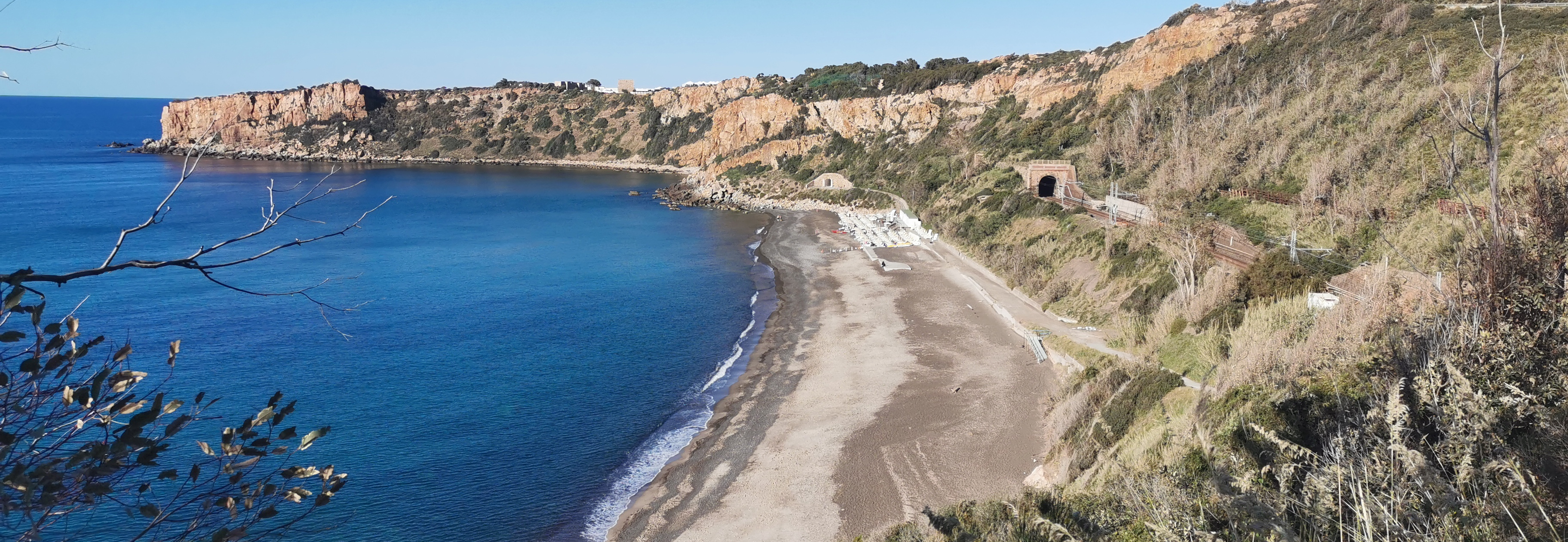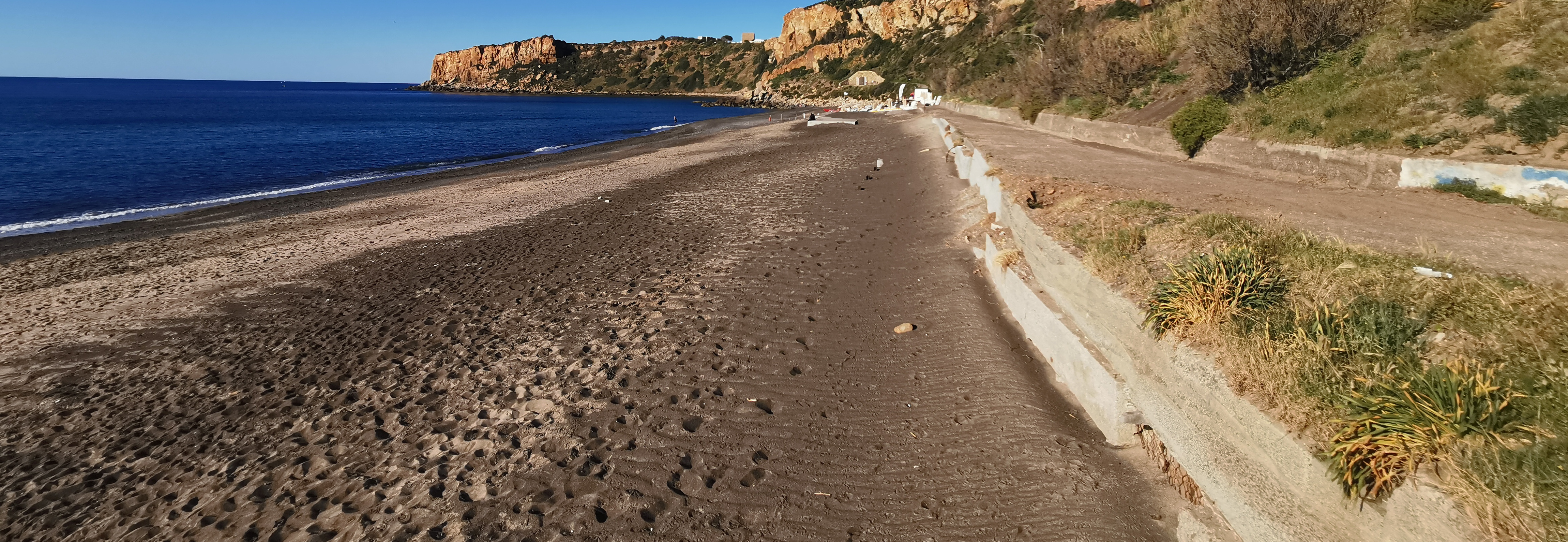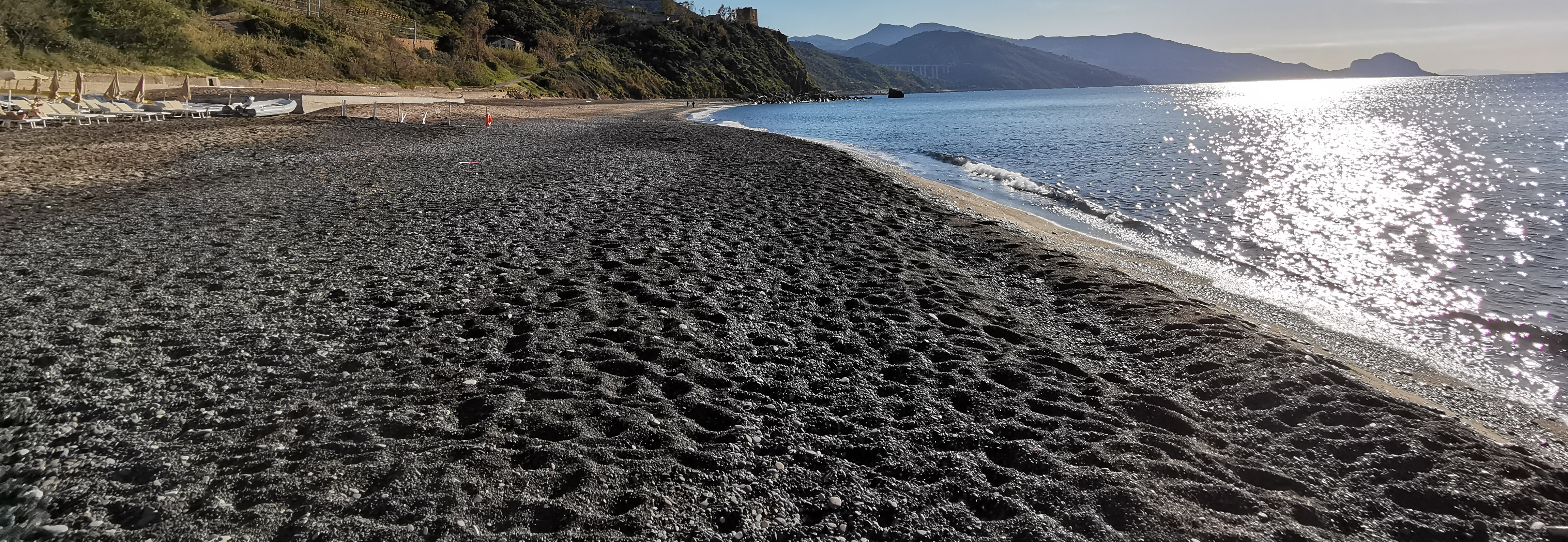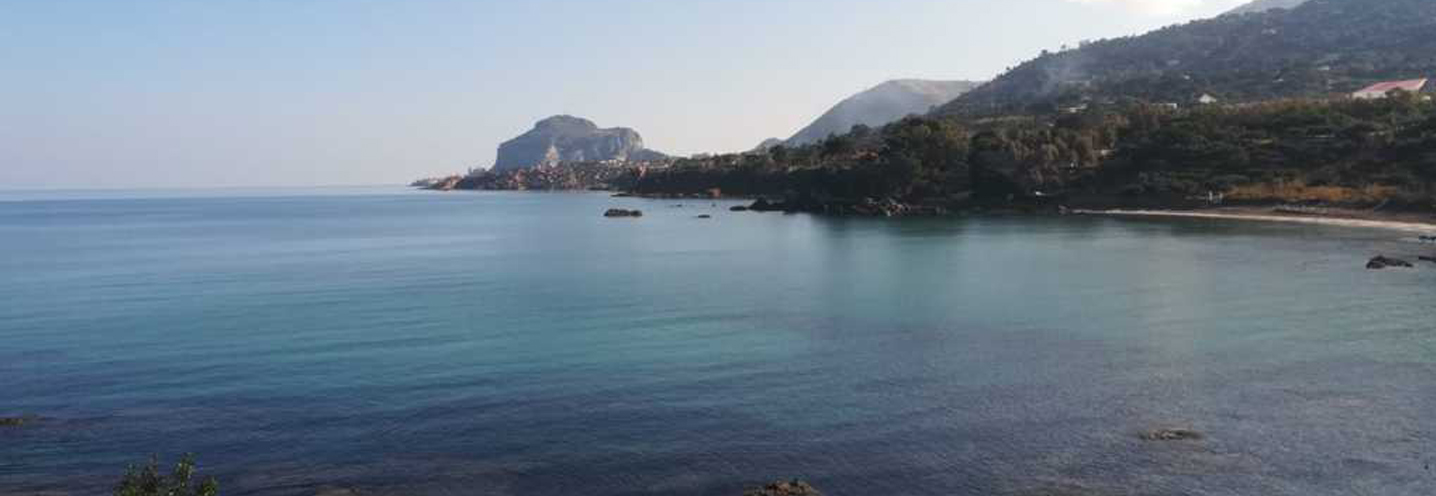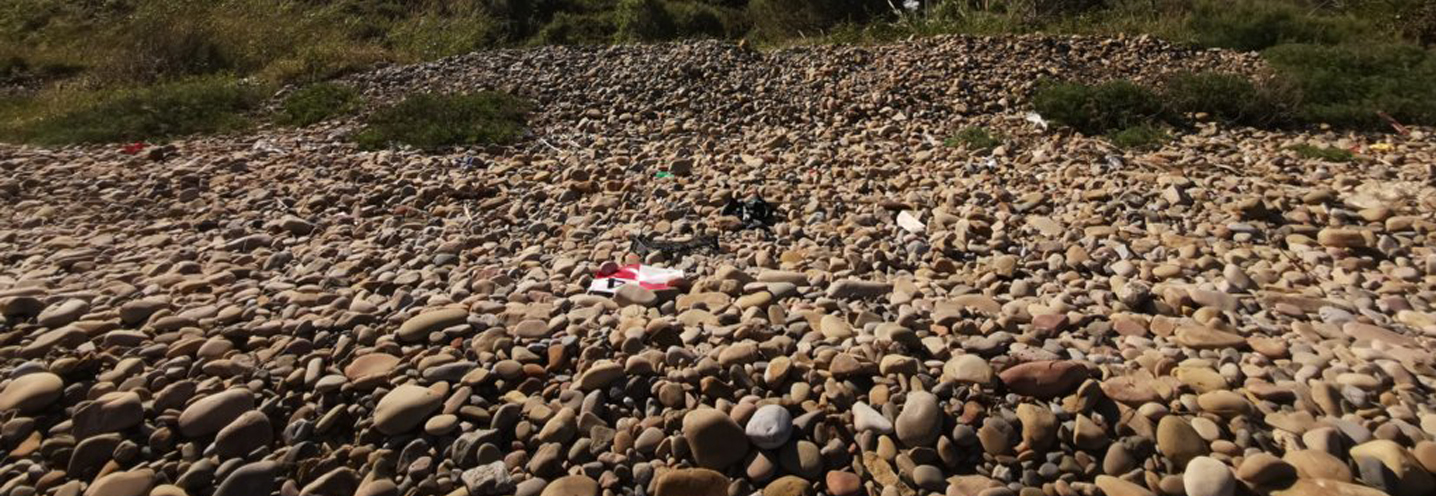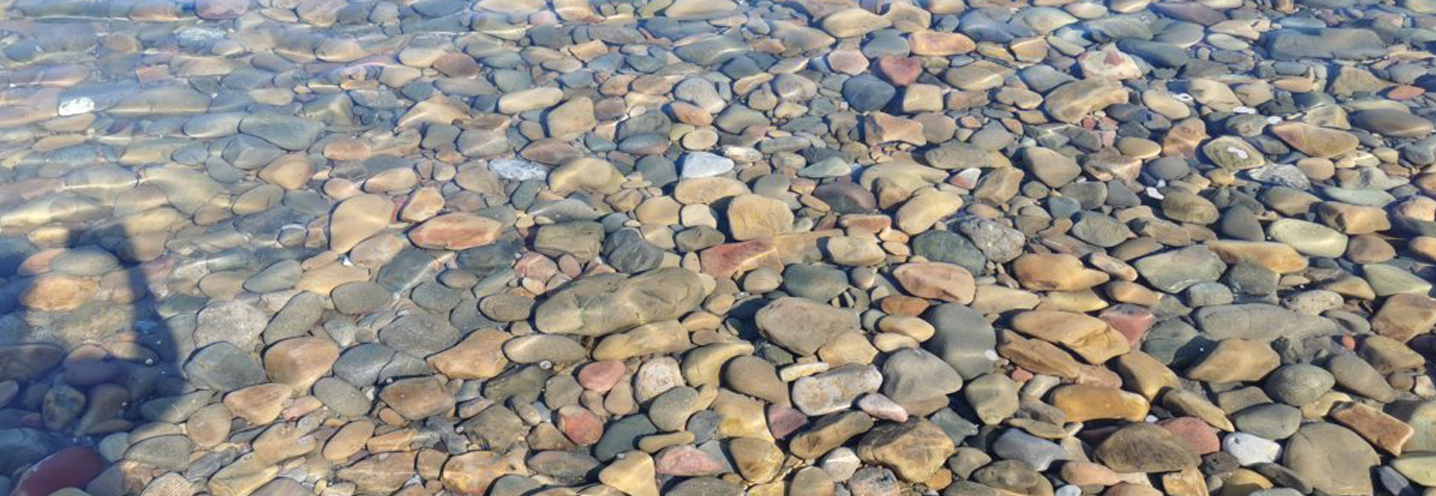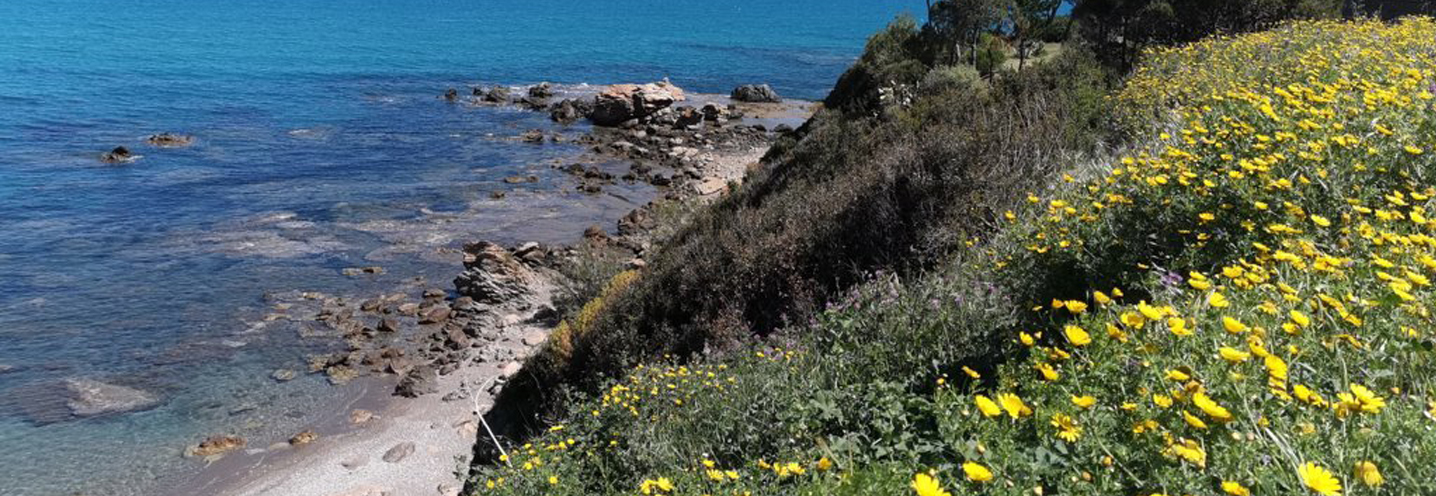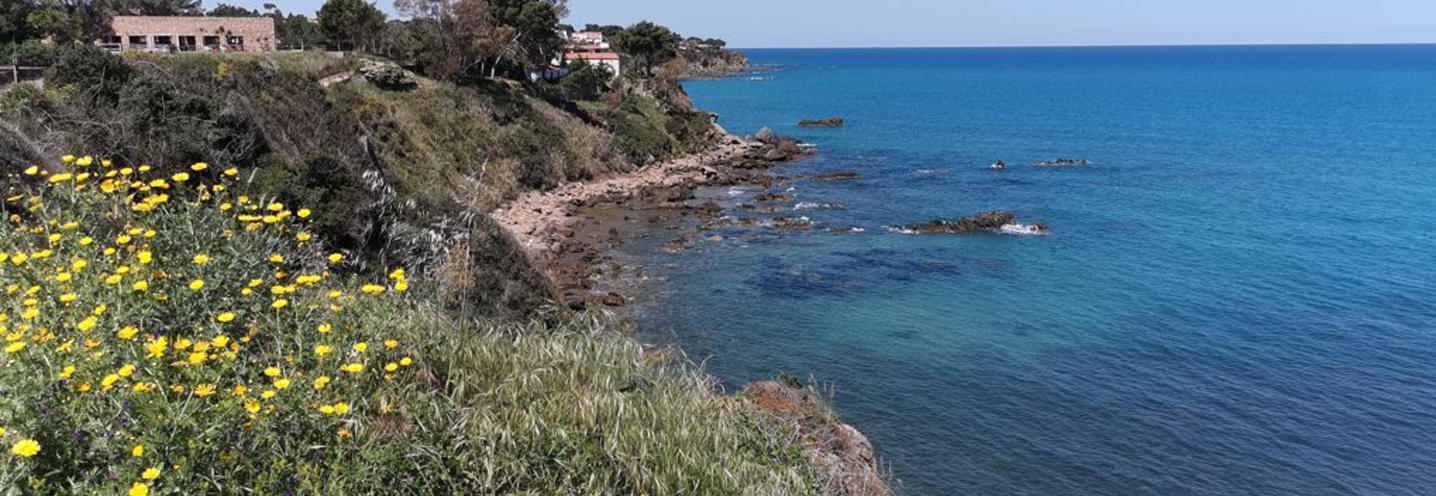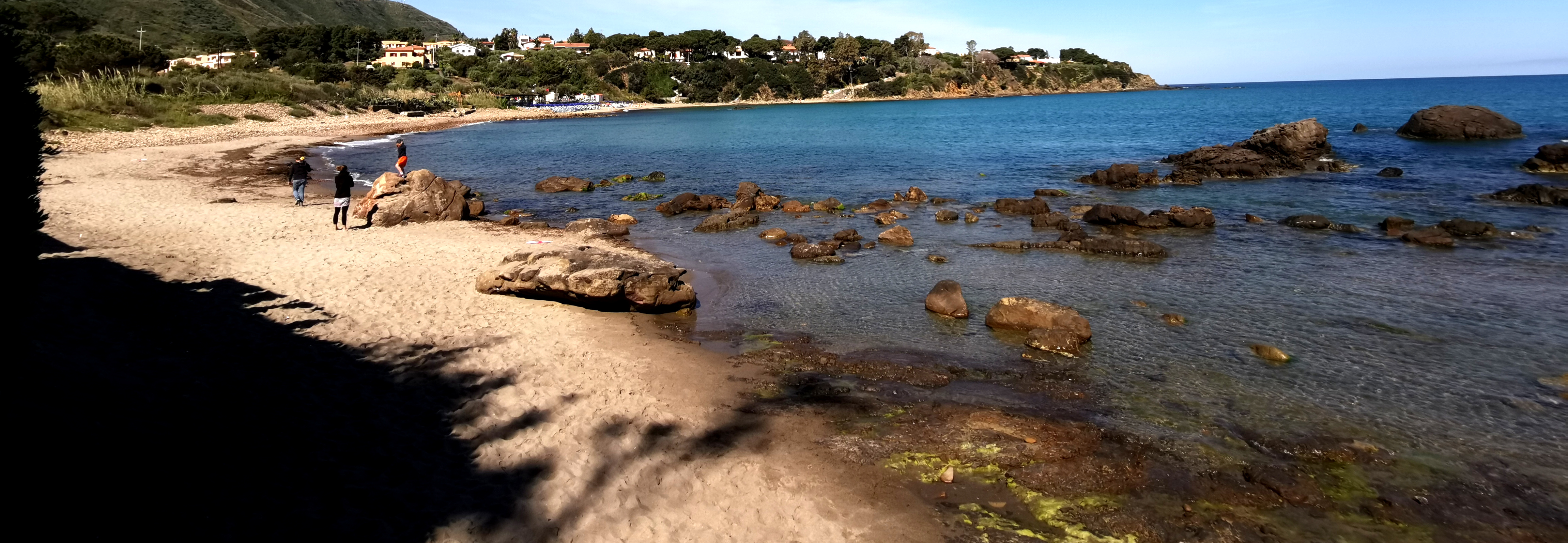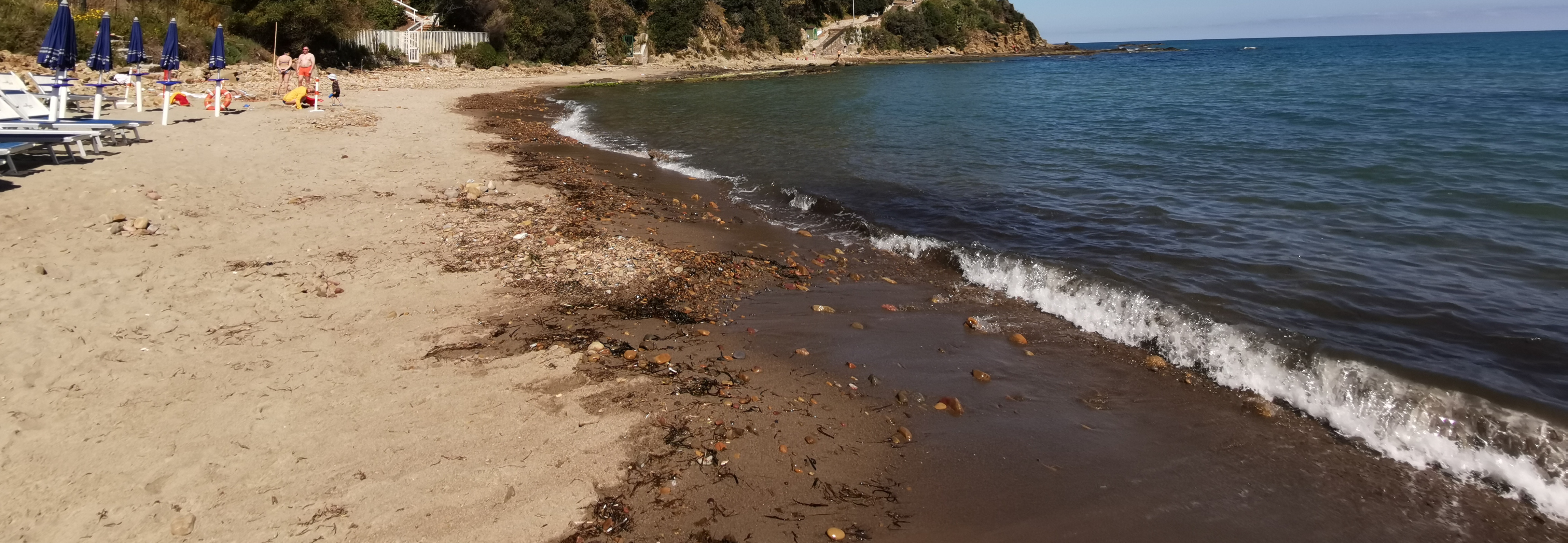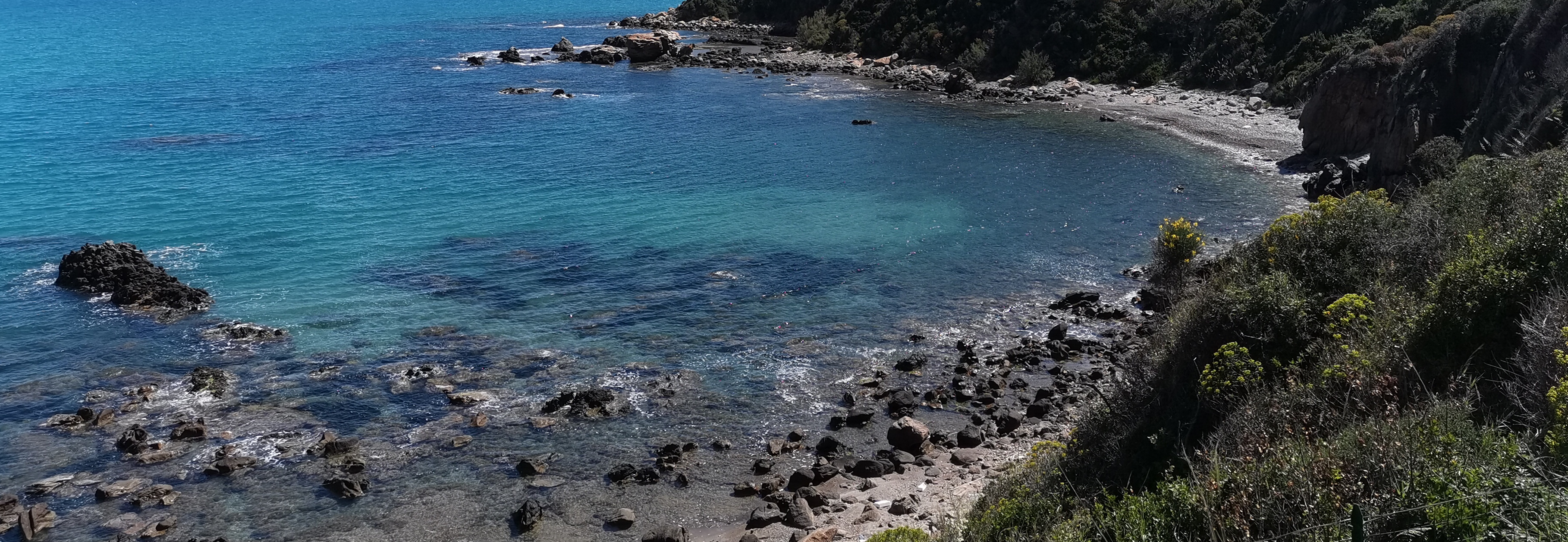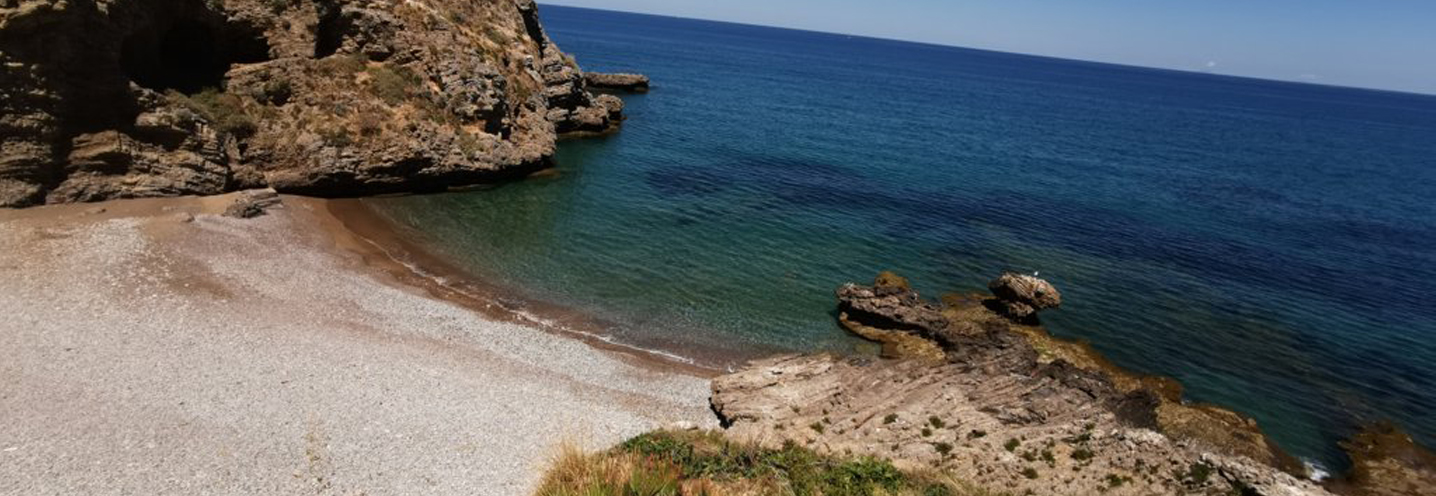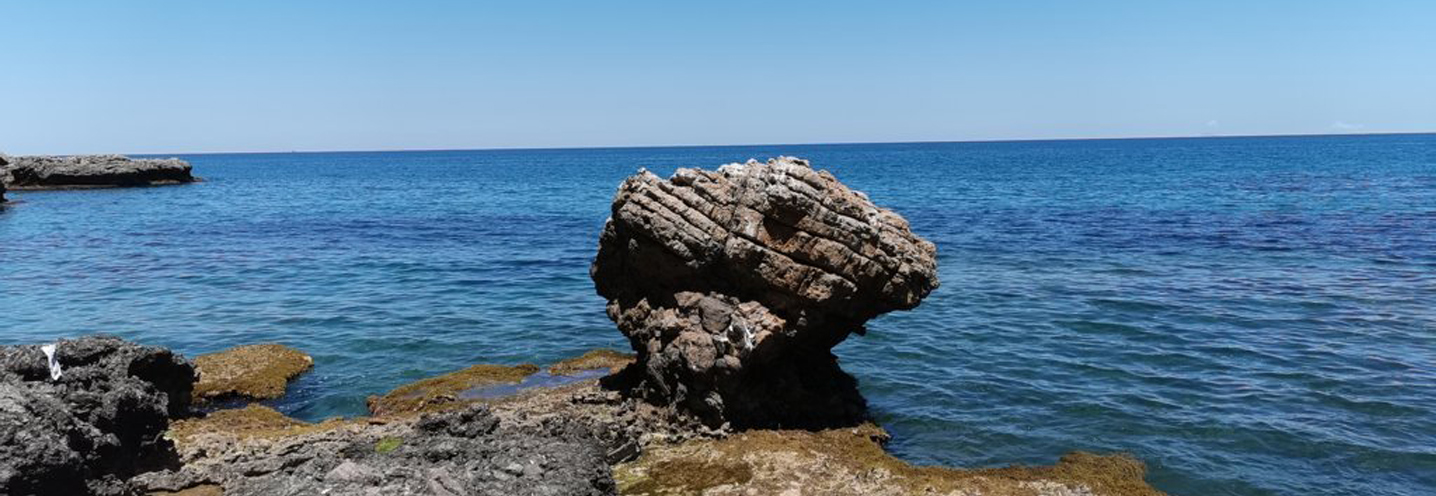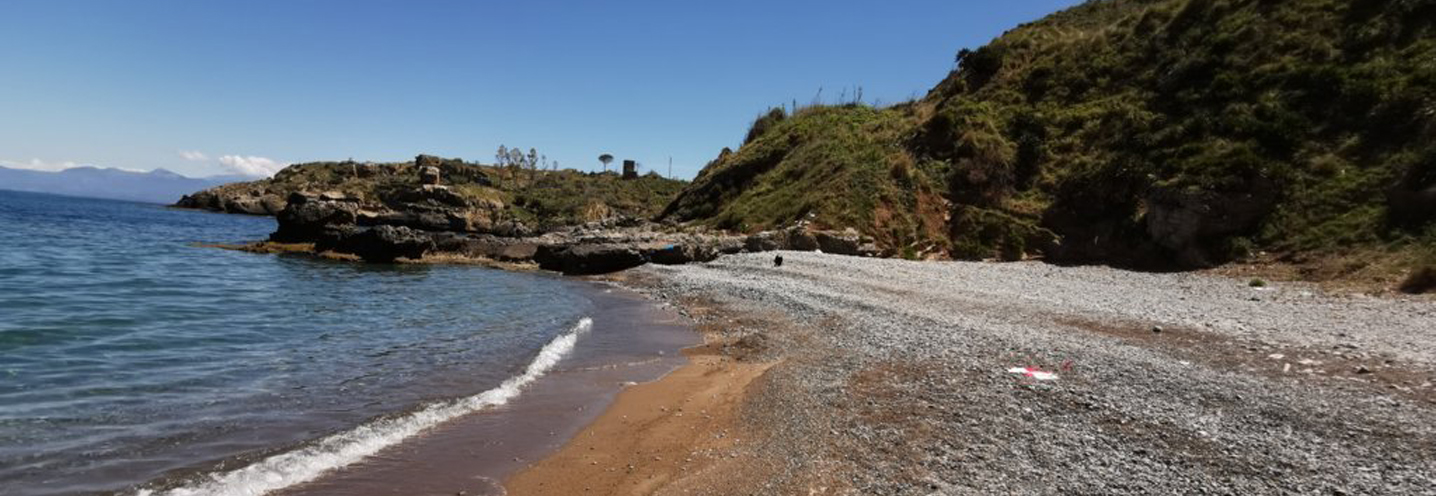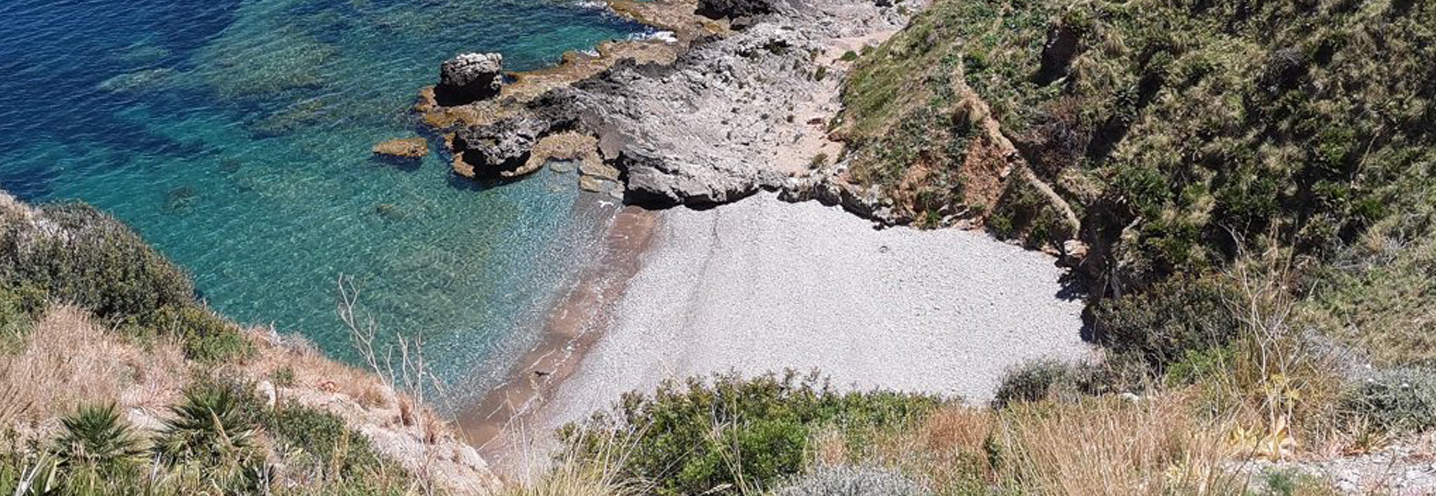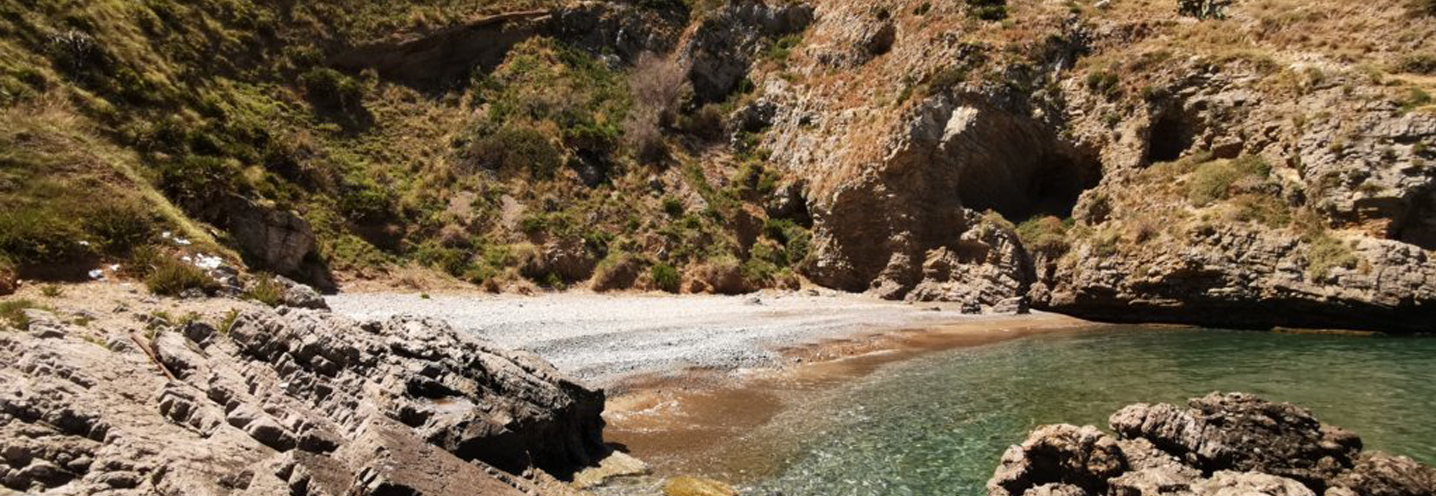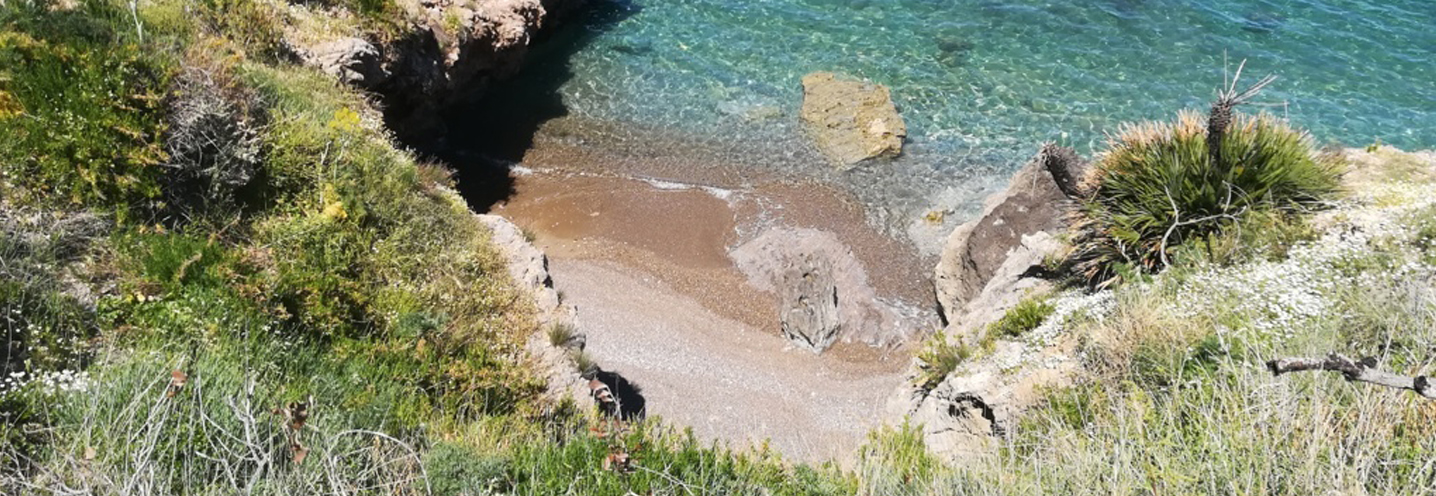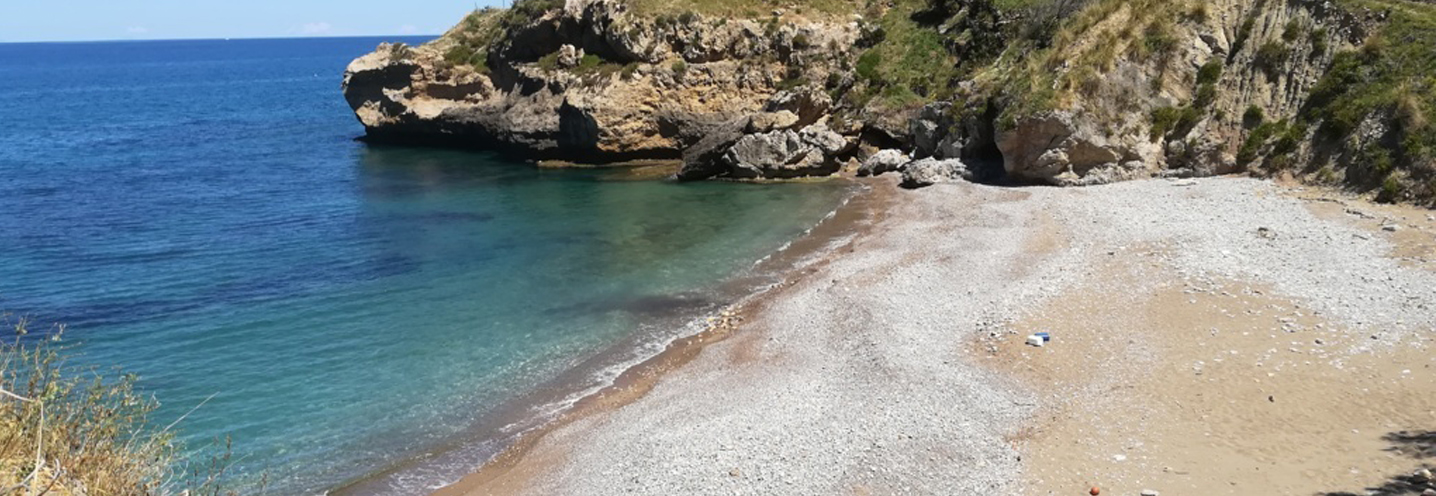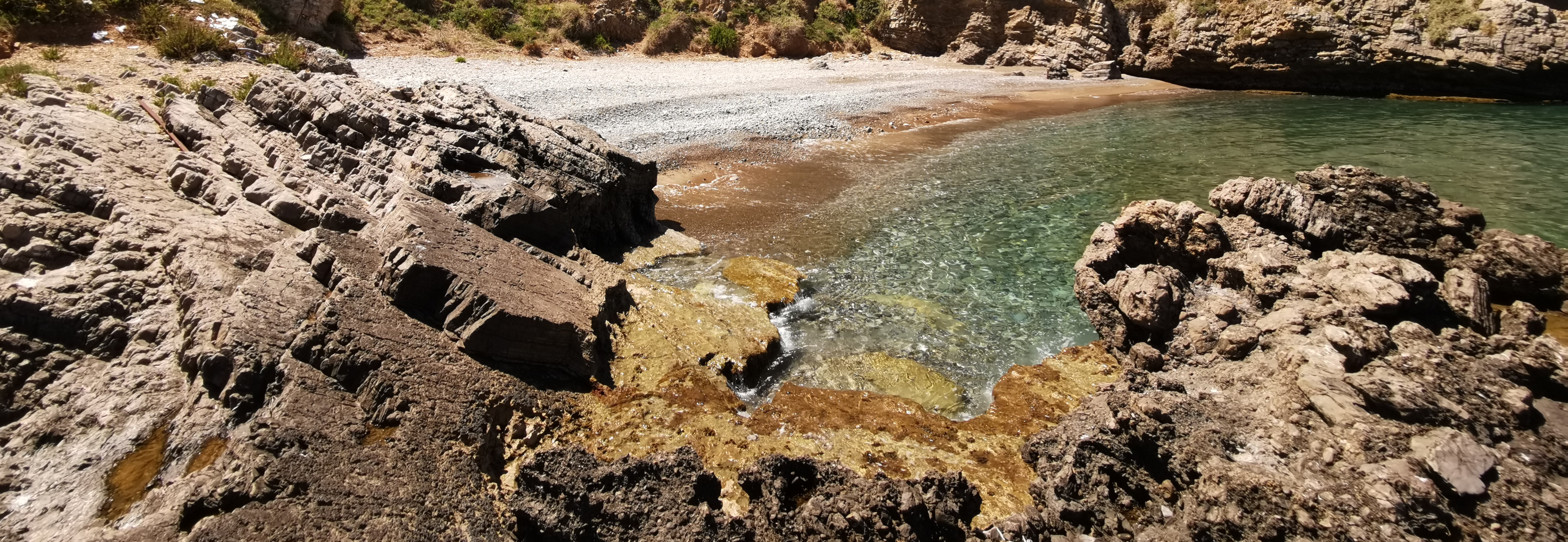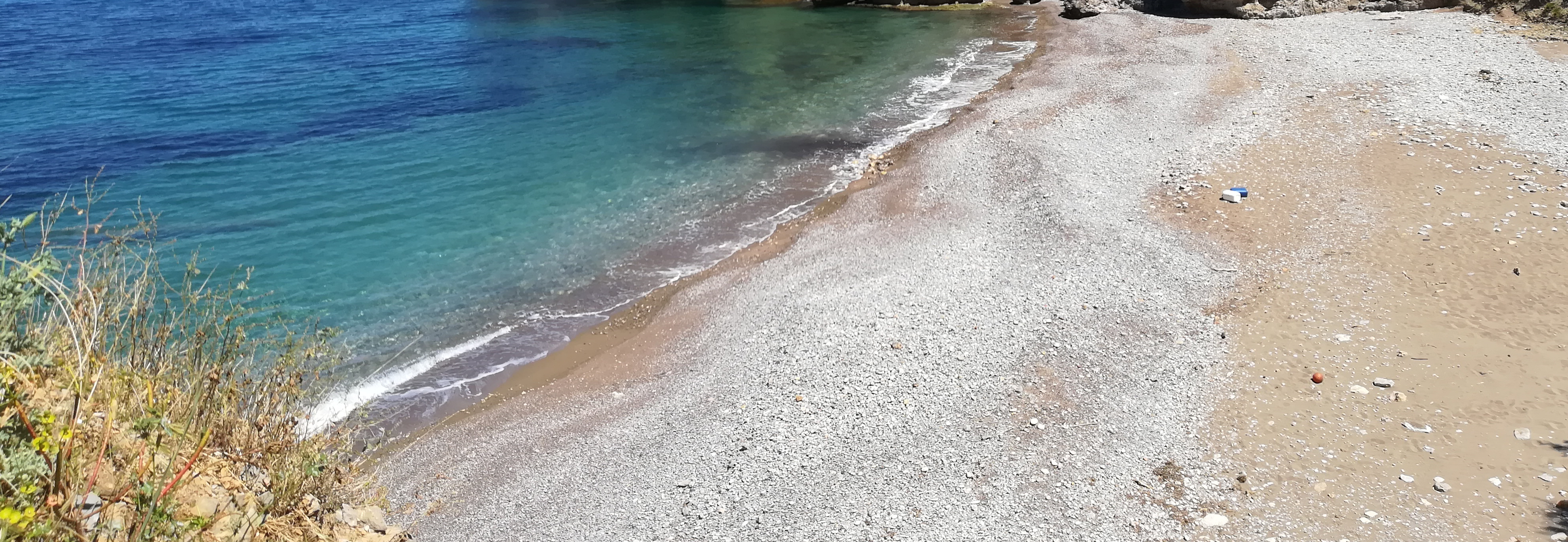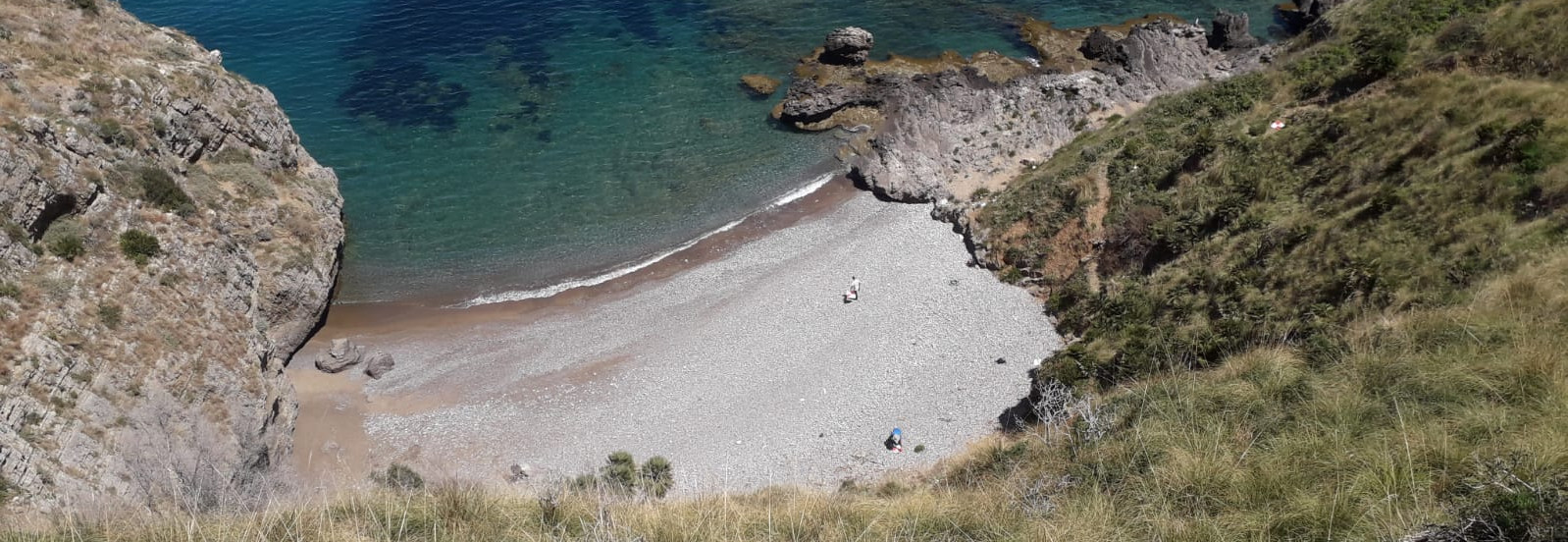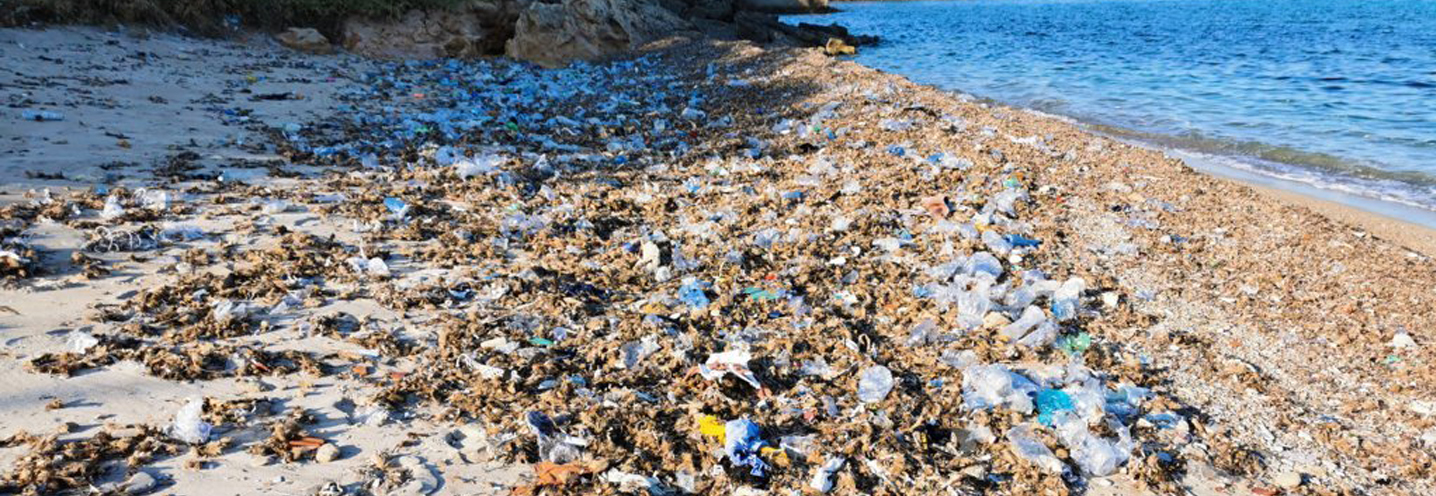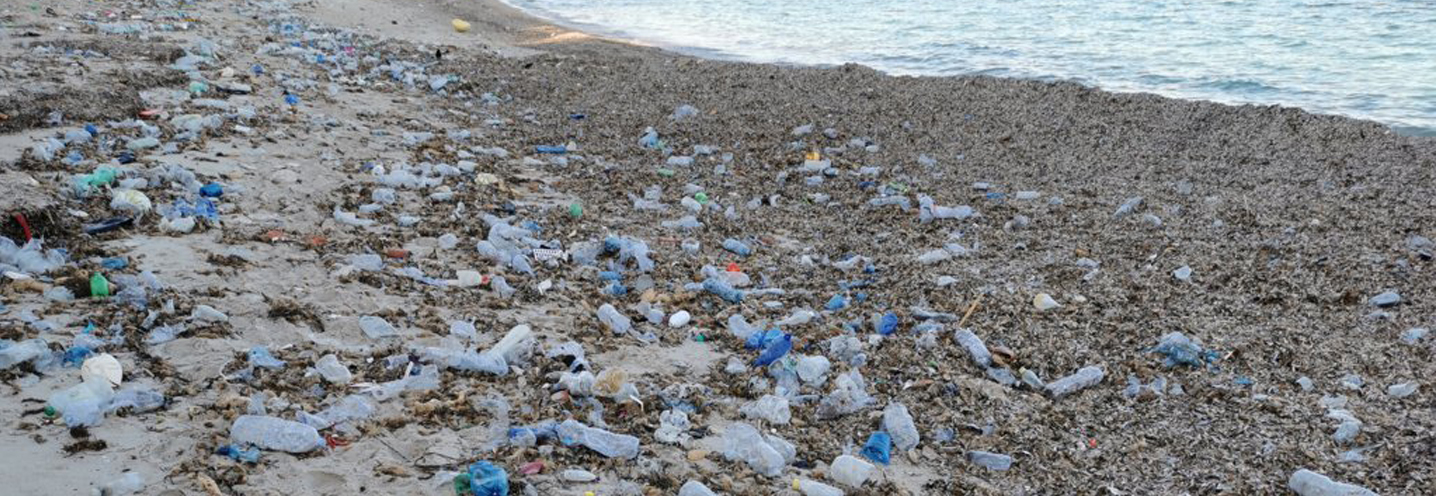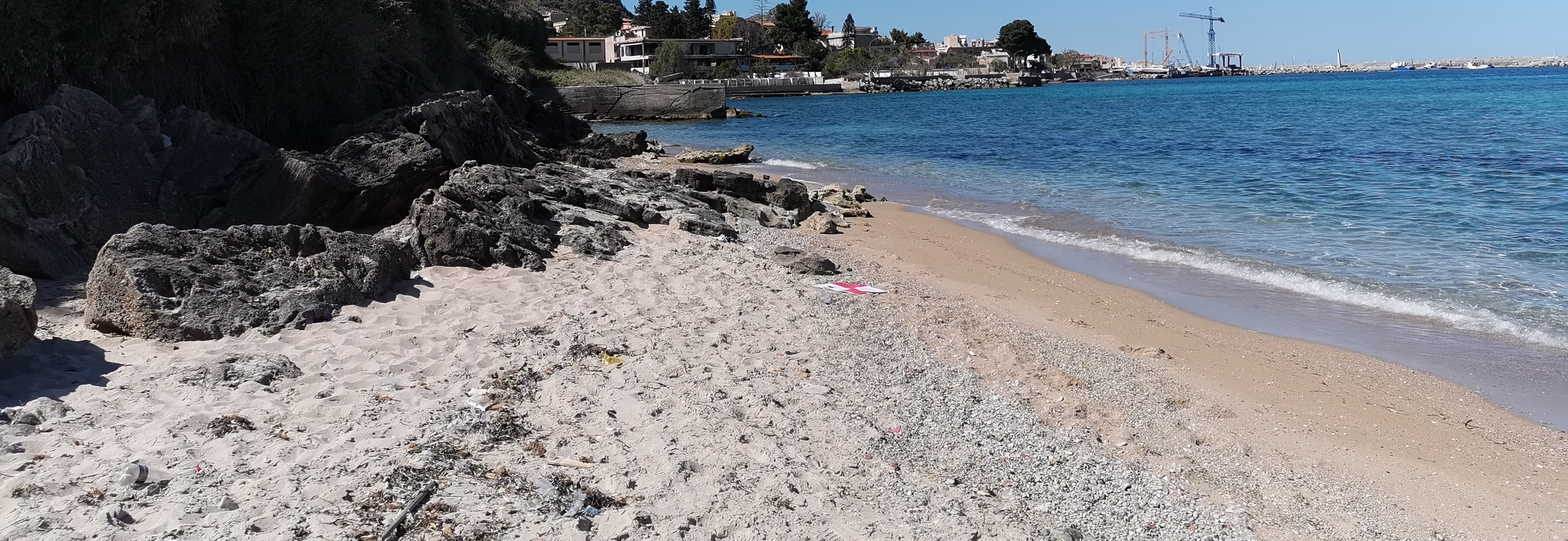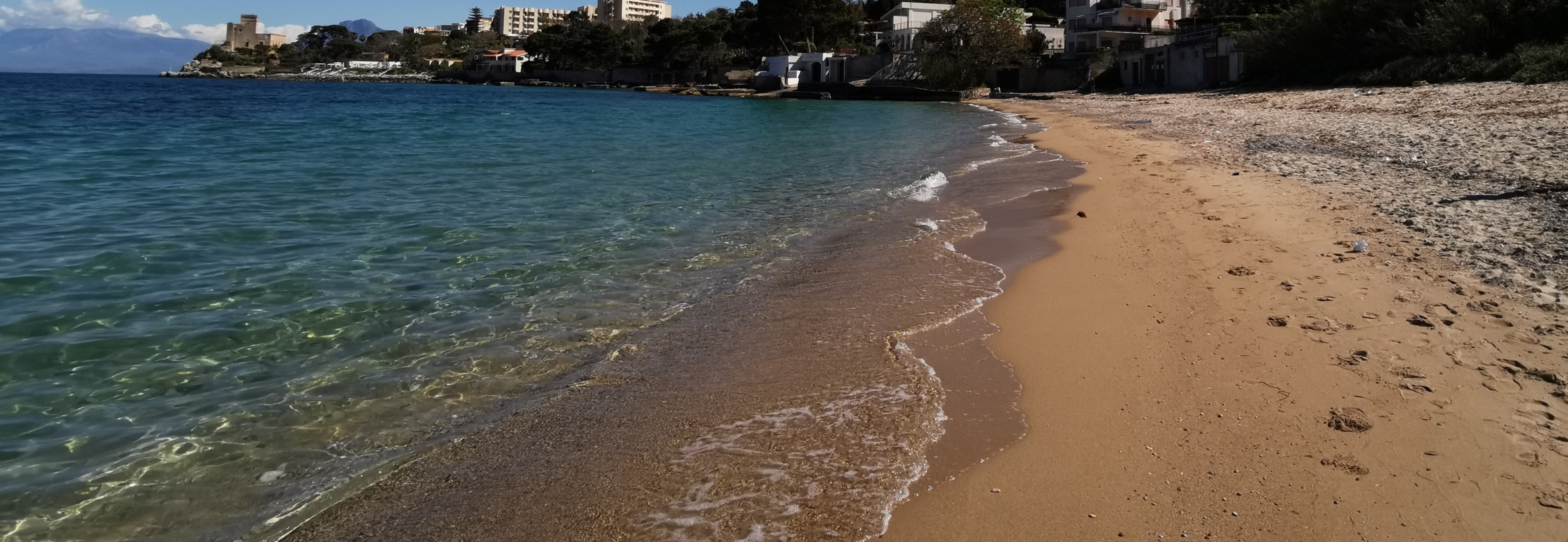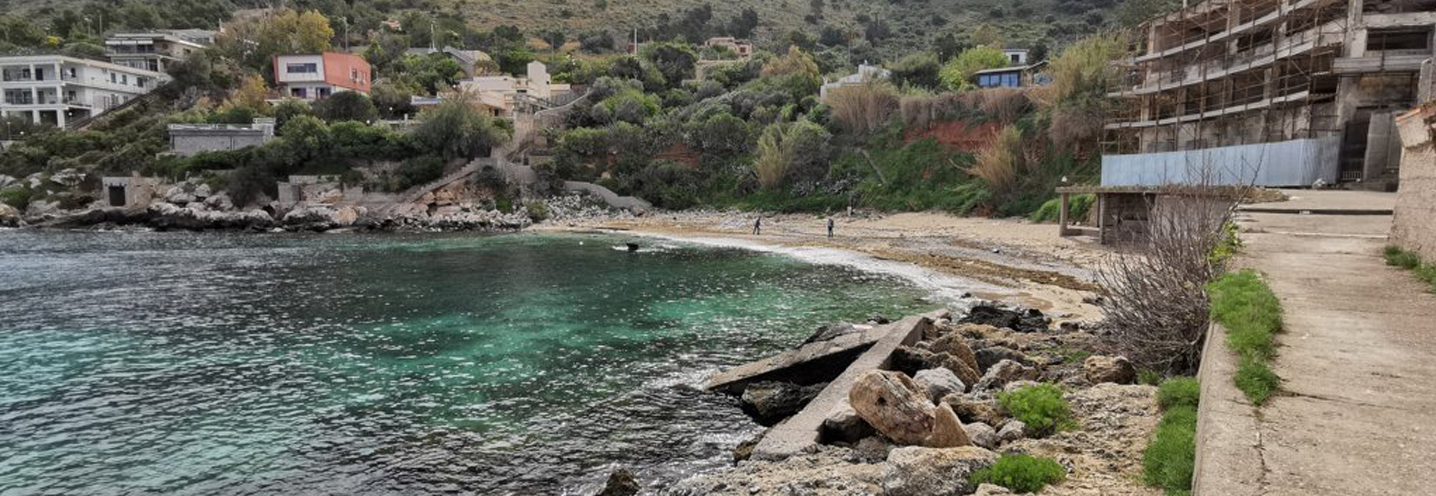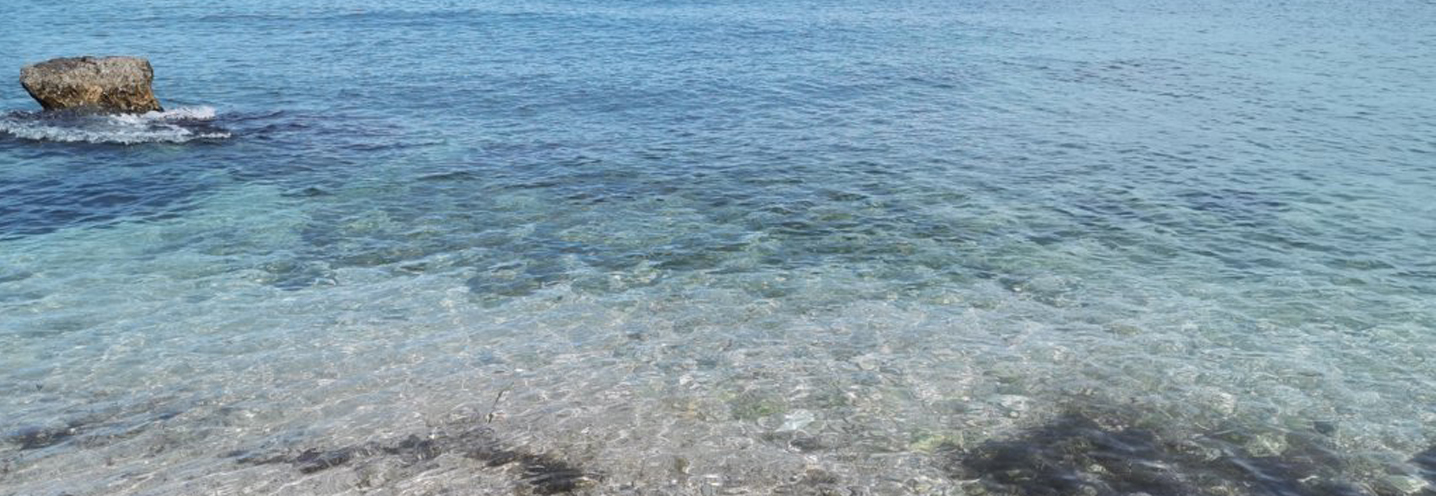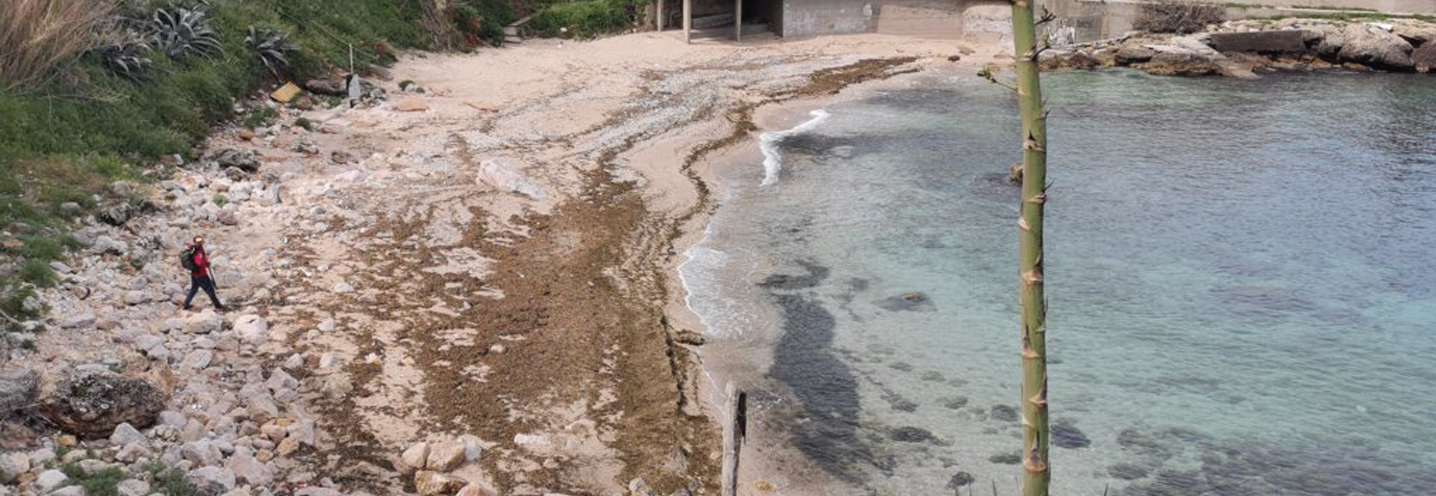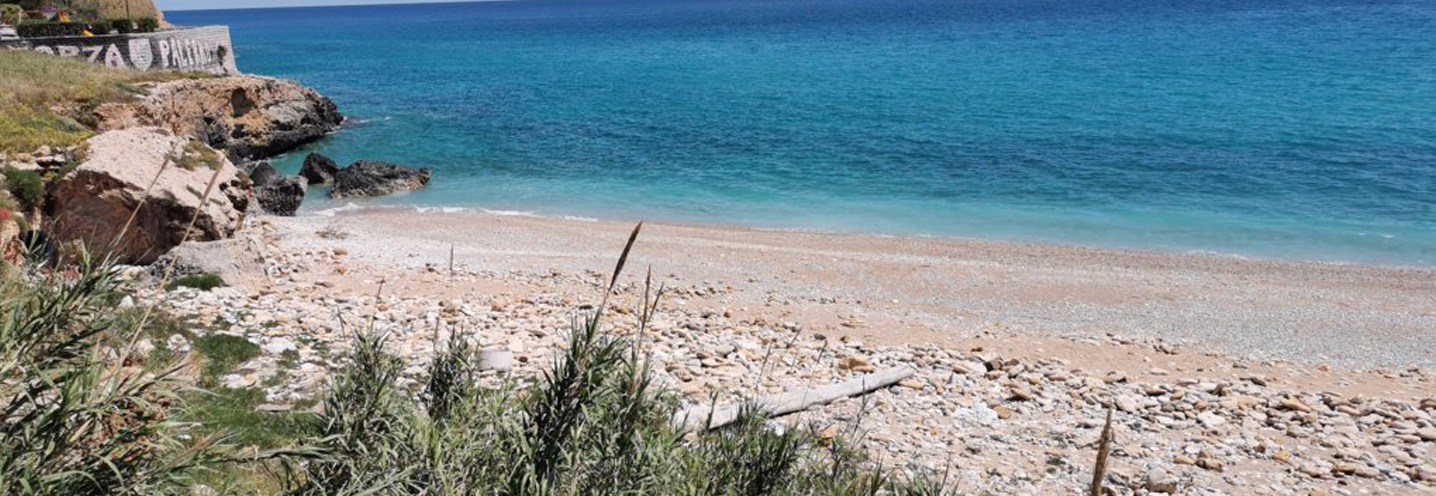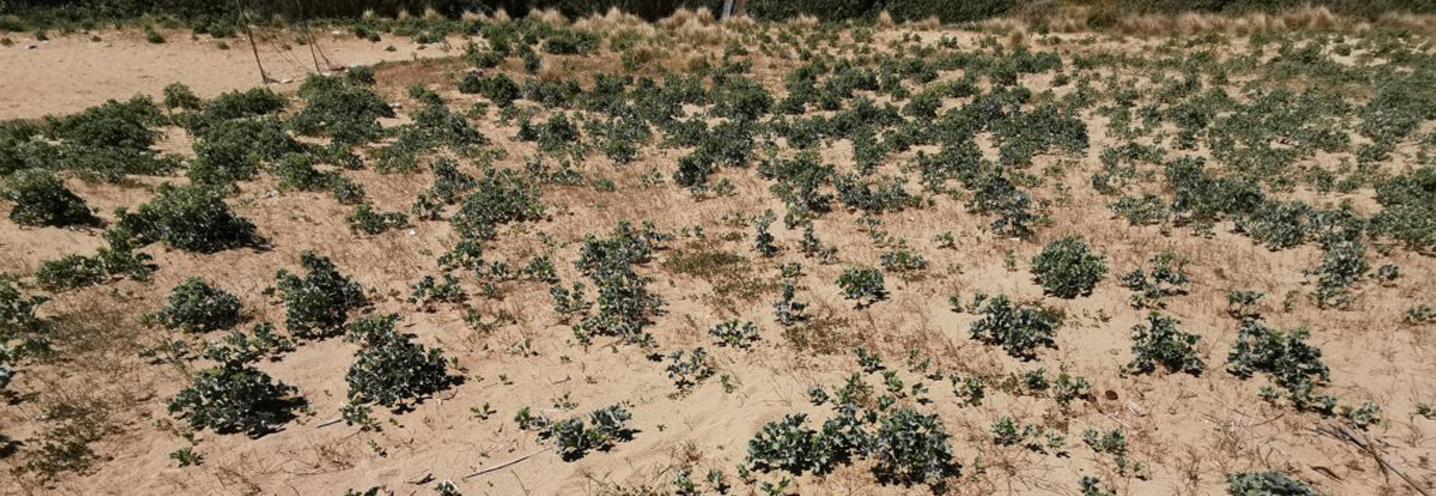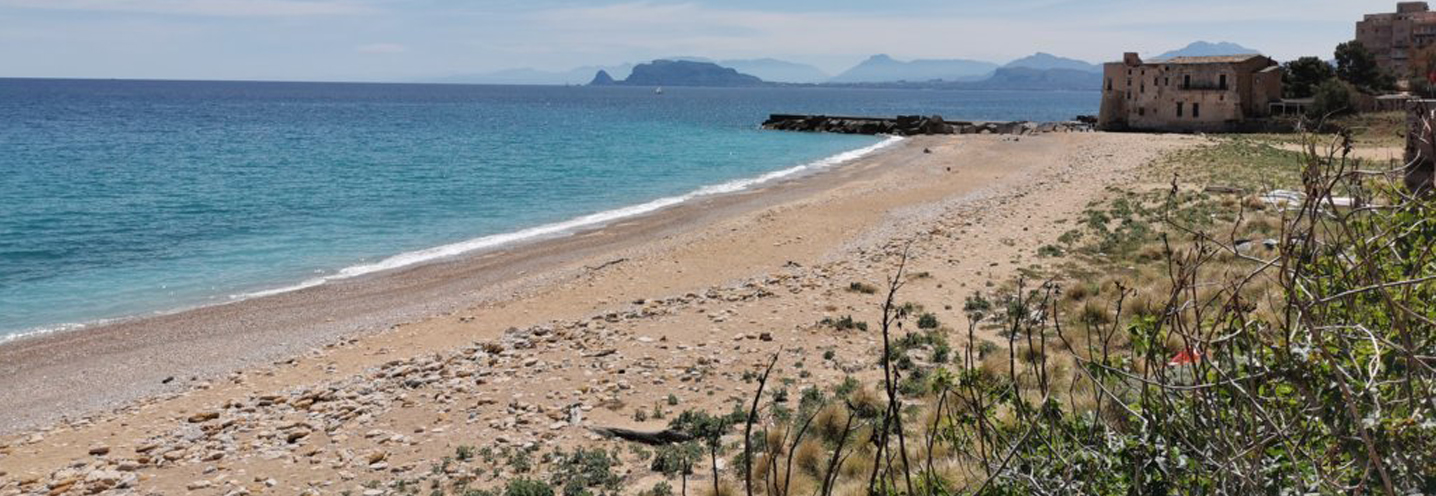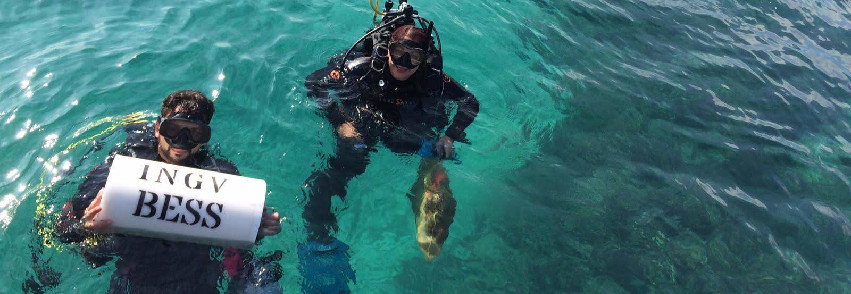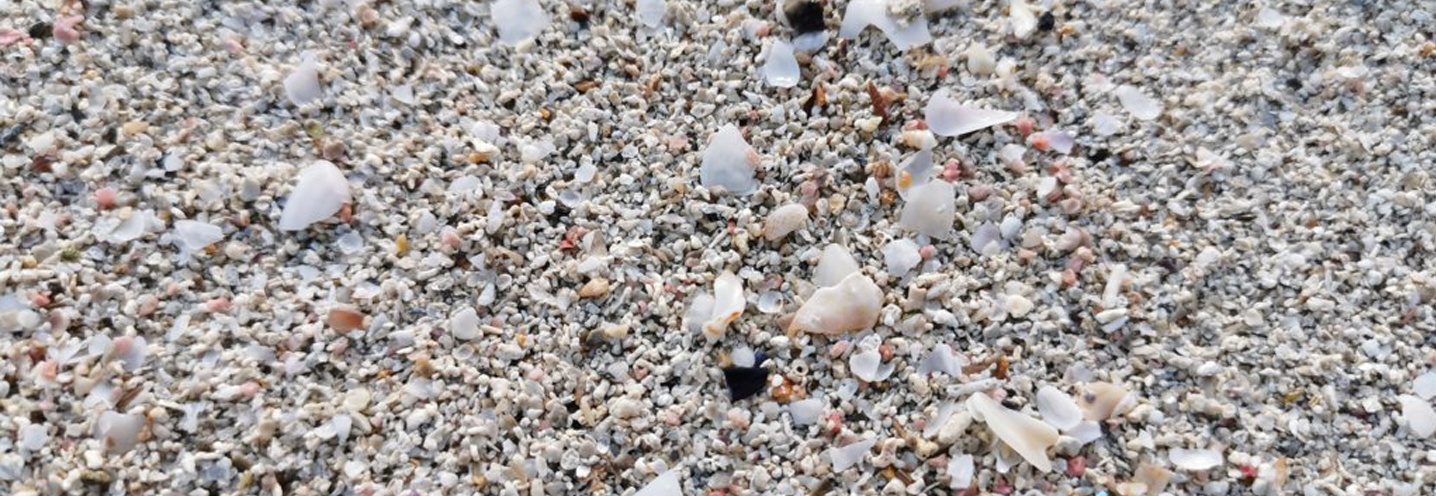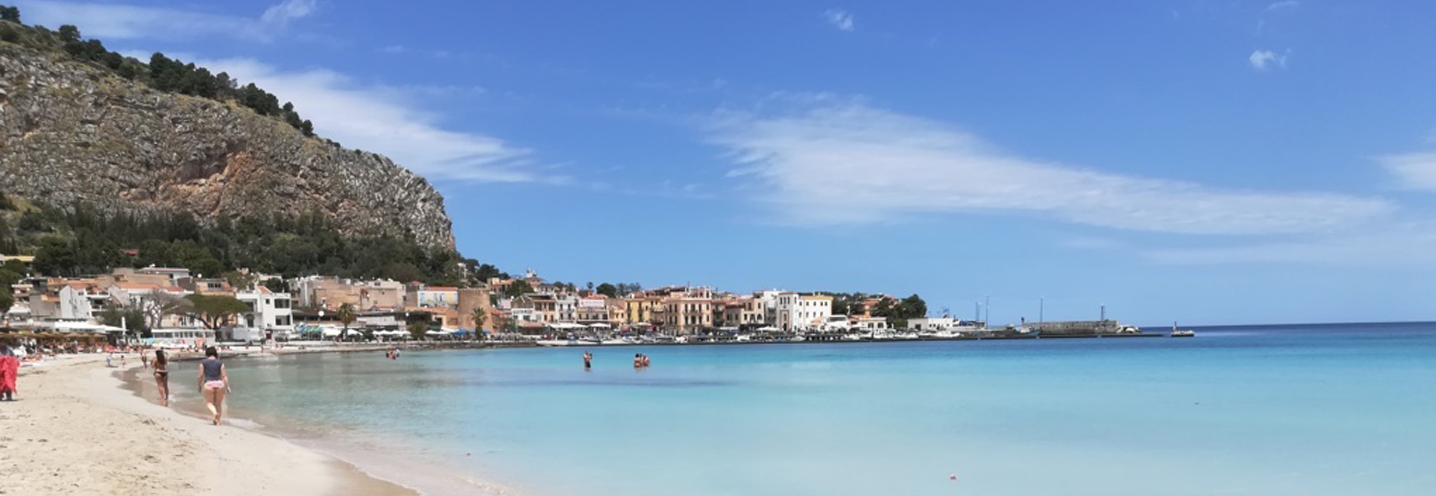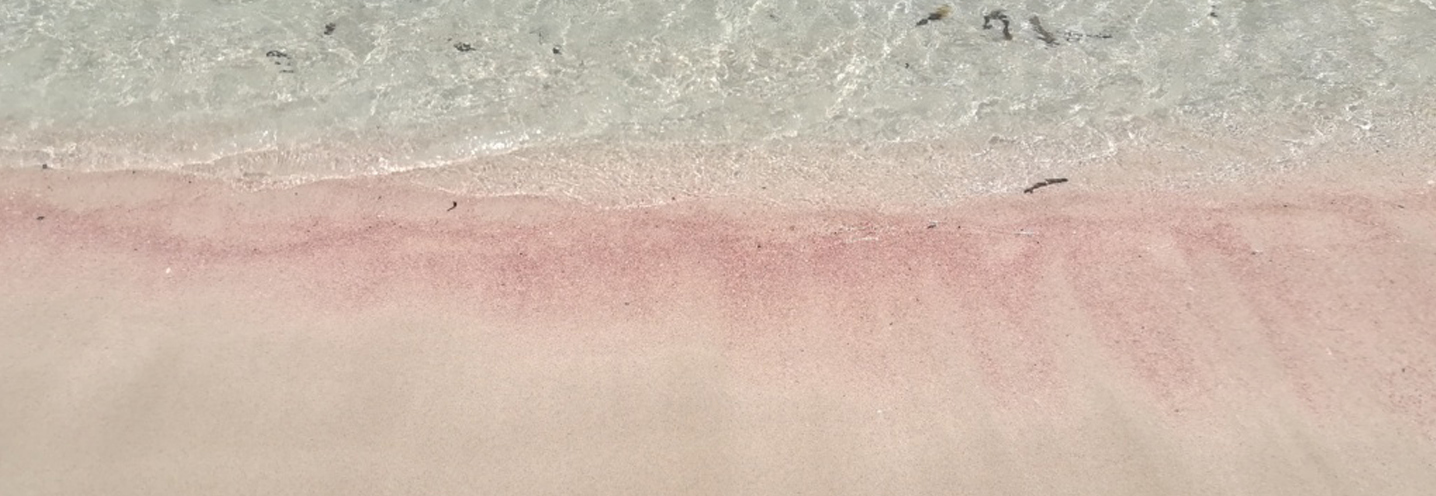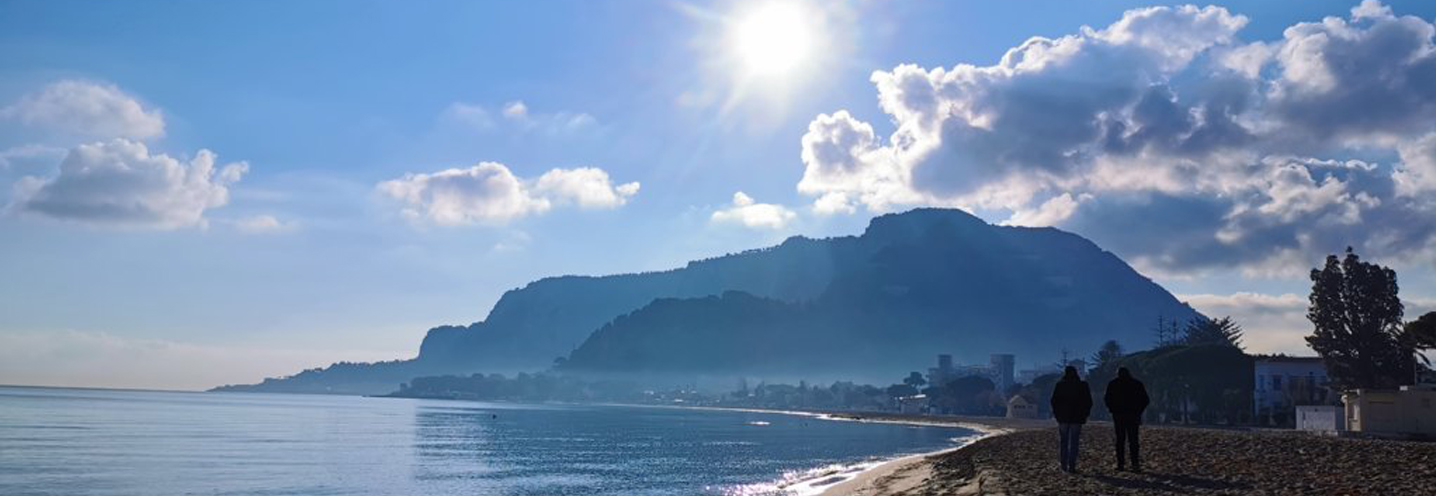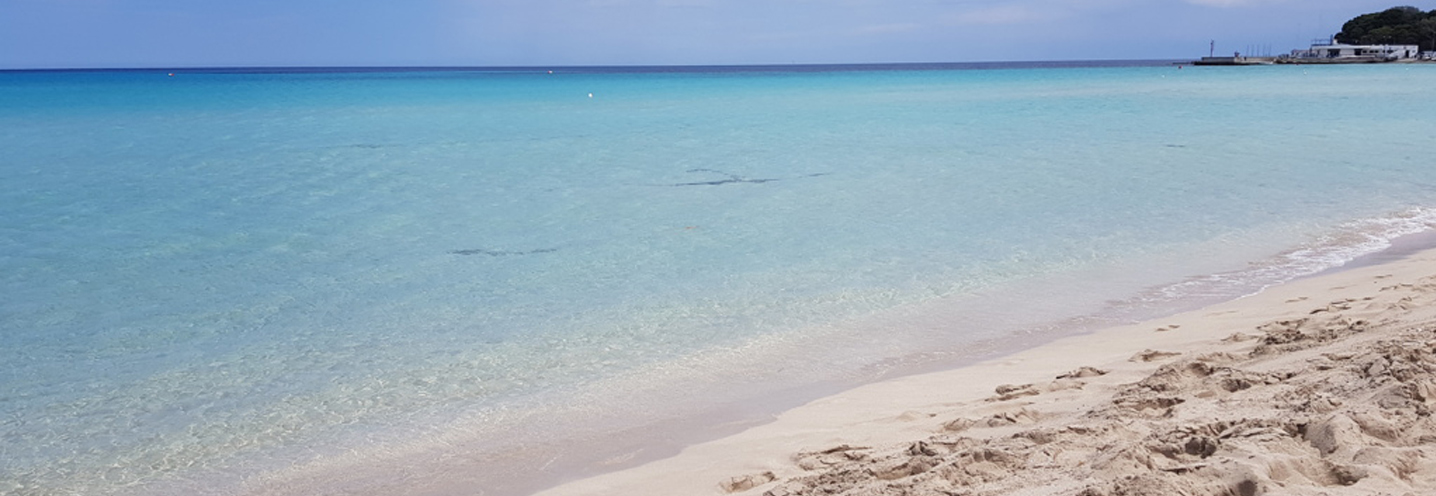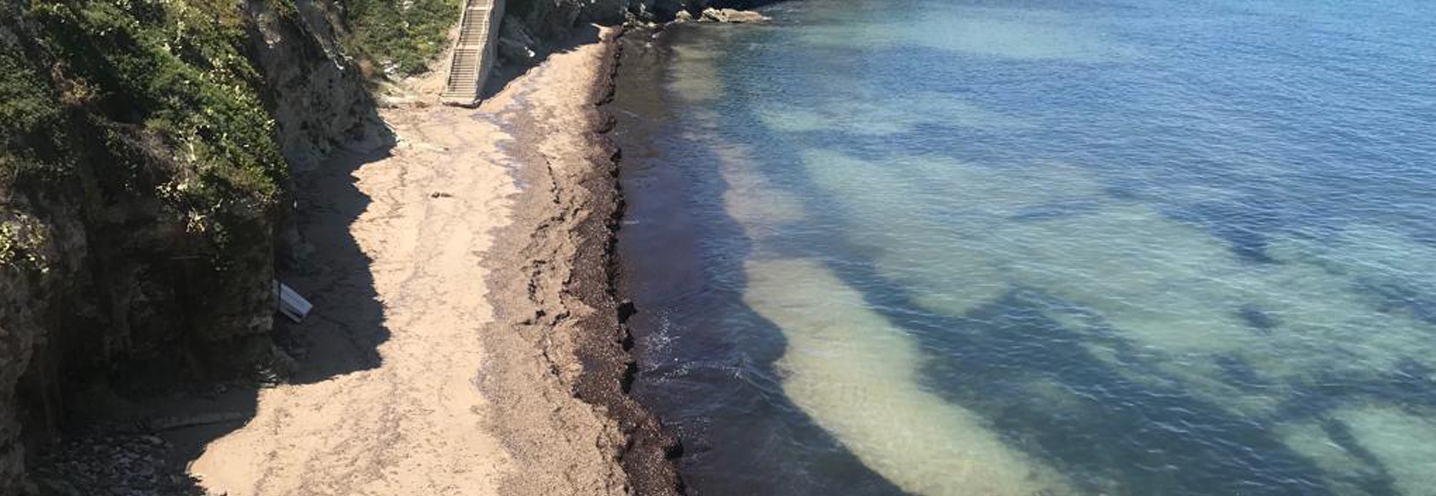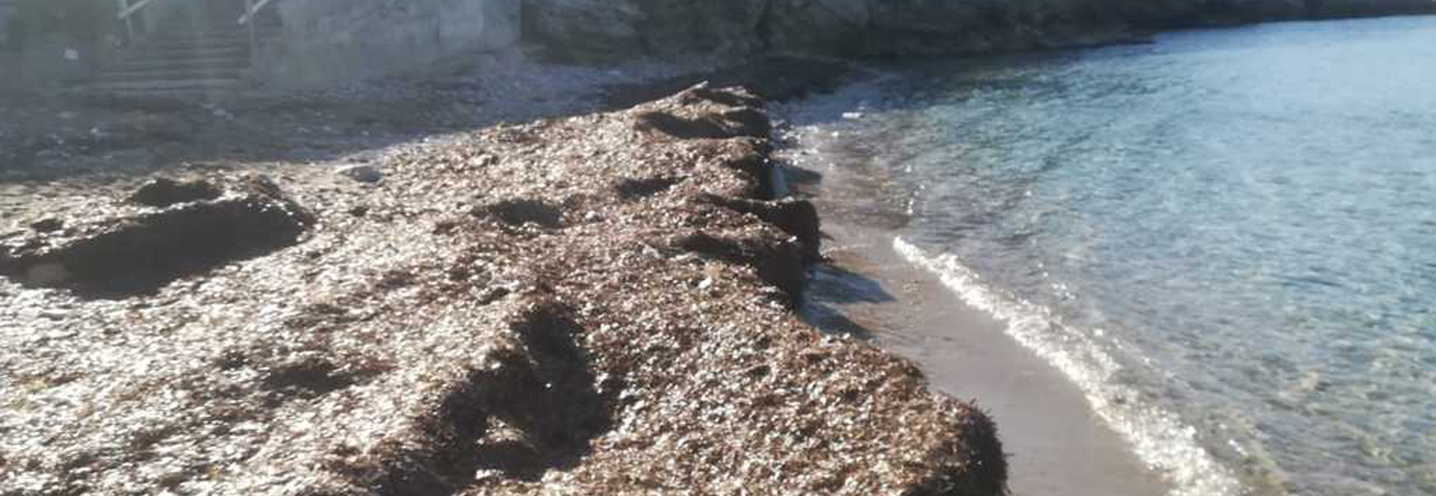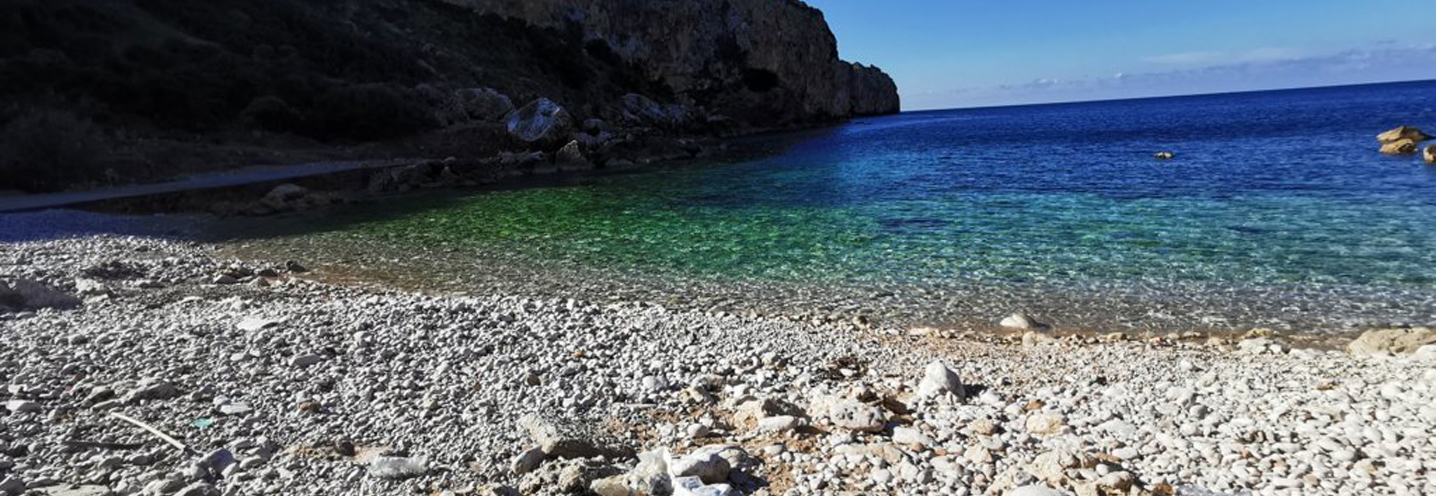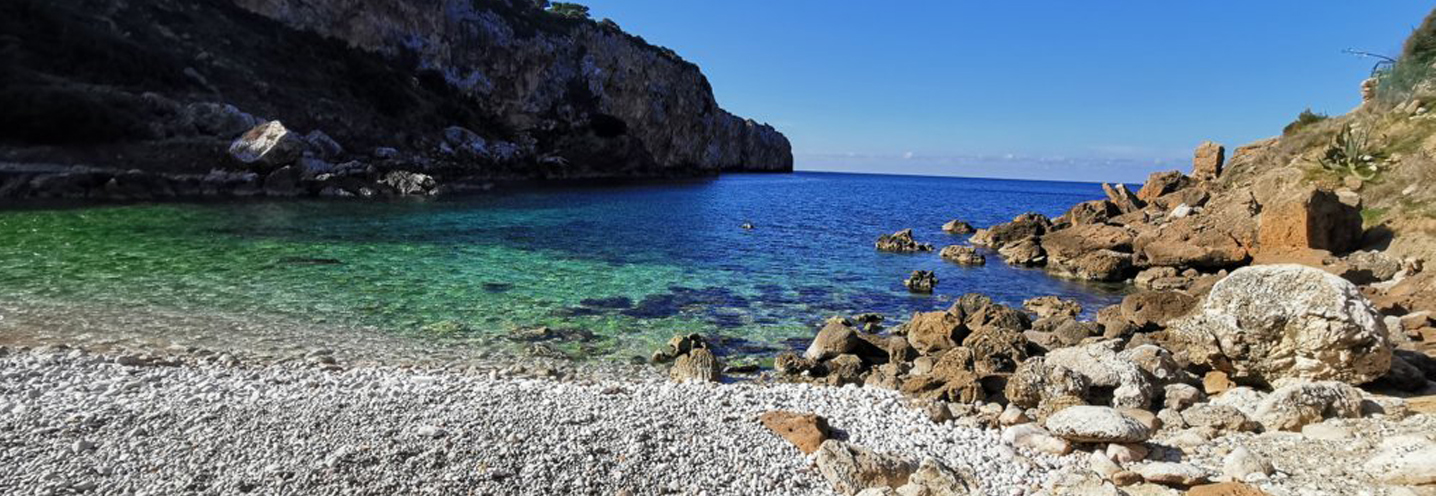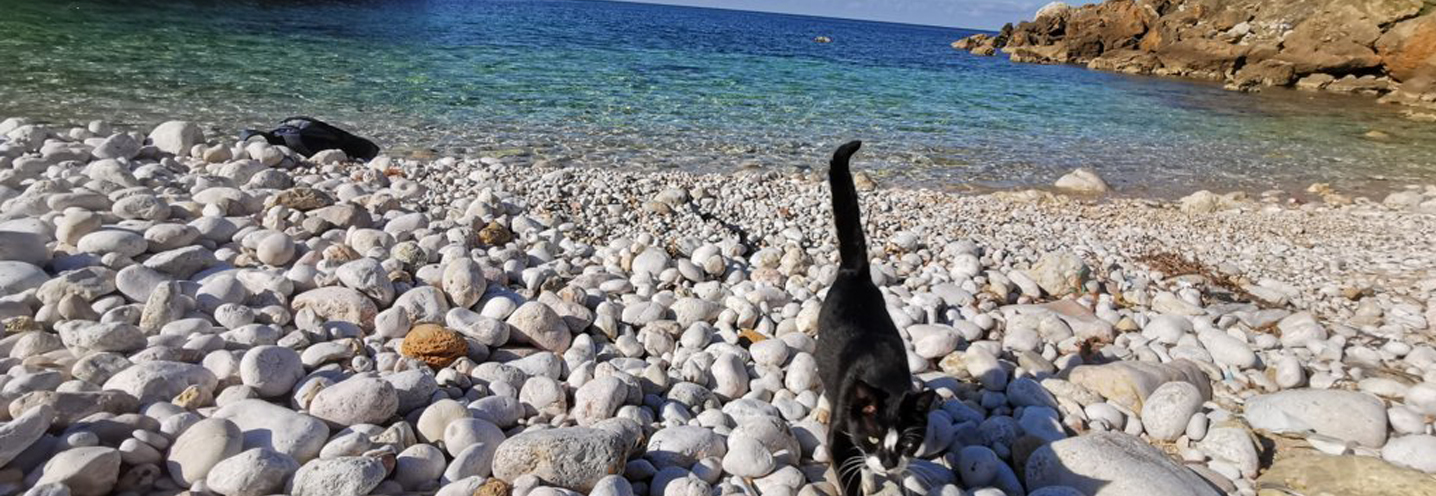- Pollina – Rais-Gerbi
Pocket beach code: SIC18PA01
The Pocket Beach (PB) of Rais-Gerbi is located in the center of the Sicilian Tyrrhenian coast, and is the easternmost in the province of Palermo. Located in the municipality of Pollina, in Rais-Gerbi, it is known by locals as “Torre Conca beach”. It is part of the PAI Physiographic Unit n° 19, which has the port of Cefalù as its western boundary, and Capo d’Orlando as its eastern boundary.
The PB is bounded by Capo Rais-Gerbi to the northwest and by a less pronounced promontory, on which stands an ancient watchtower to the southeast. The cliff behind it has a maximum height of 60 m above sea level.
In the surrounding area, the Numidian Flysch emerges, which is characterised by brown clays in which quartzarenites and yellowish quartzorudites intertwine in large banks. The area immediately behind the PB shows a detrital slope and a terraced marine deposit.
The PB of Capo Raisigerbi is characterised by sediments with granulometry that vary from coarse sands to pebbles, with a characteristic dark color, generally rounded. From a compositional point of view, quartz clasts, lithic fragments and polychrome flint prevail.
- Cefalù – Settefrati
Pocket beach code: SIC19PA02_03_04_05
The four Pocket Beaches (PB) of Cefalù are located in the central part of the Sicilian Tyrrhenian coast. This group of PB falls in the municipality of Cefalù, in the province of Palermo and more precisely to the east of the small fraction called Mazzaforno. They fall within the PAI Physiographic Unit n° 18, which has the port of Cefalù as its eastern boundary, and Capo Mongerbino as its western boundary.
These are PBs enclosed by fairly pronounced promontories, at the base of steep or terraced slopes.
The cliff behind it does not exceed the height of 35 m above sea level.
Two PBs are part of tourist villages and are therefore managed by private individuals who regulate their access.
The more projecting ends towards the sea of the two lateral promontories are made up of grey-yellowish sandstones in metric banks, consisting of lithic arches and feldspathic litharenites. Abundant recent alluvial deposits occupy the plain behind, interspersed with outcrops of various types such as coastal deposits and brown clays in which quartzarenites and yellowish quartzites are interspersed.
The two most western PBs (SIC19PA04_05) are made up of grains between medium sands and medium rounded pebbles, compositionally consisting of prevailing quartz clasts, lithic fragments and polychrome flint.
- Altavilla Milicia – Torre Normanna
Pocket beach code: SIC21PA06_07
The two Pocket Beaches (PB) of Torre Normanna are located in the northwestern sector of the Sicilian Tyrrhenian coast, in the municipality of Altavilla Milicia (province of Palermo), northwest of the town of San Nicola l’Arena. They are part of the PAI Physiographic Unit n.18, which has the port of Cefalù as its eastern limit, and Capo Mongerbino as its western limit.
The two PBs develop side by side and are separated by a small rocky promontory. They are bounded by the Punta Mandra promontory in the southeast and by Capo Grosso in the northwest, the latter being much more projecting than the former. The cliff behind it reaches its maximum height around 50 m above sea level on the northwestern promontory, while decreasing up to about 20 m on the opposite promontory.
The view of the bays from the promontory where the tower stands appears very beautiful, which allows you to enjoy a unique panorama.
The surrounding geological context is very varied: The calcarenites of Palermo constitute the western promontory, while the eastern one consists of calcilutites and greyish calcarenites laminated with slates and flint nodules.
In the western area, conglomerates, sands and marine silts also emerge in abundance, with local greyish pelitic intercalations that have settled on terraced surfaces. In the eastern area, on the other hand, marl and white marl limestone with planktonic foraminifers emerge, passing upwards to sandy marl, calcarenite and clay marl.
The two PBs are characterized by grain sizes ranging from medium-coarse sand to medium-coarse, polygenic and rounded pebbles, with a very light color.
- Santa Flavia – Porto Di Spagna
Pocket beach code: SIC21PA08
Pocket Beach (PB) is located in northwestern Sicily, in the province of Palermo, in the municipality of Santa Flavia and falls within the PAI Physiographic Unit No. 18, which has the port of Cefalù as its eastern limit, and Capo Mongerbino as its western limit .
The PB is limited laterally by two piers, therefore it is an artificial PB, and there is no cliff behind it.
In the area adjacent to the PB, the calcarenites of Palermo (Sintema di Marsala) emerge, which consist of calcarenites and calcirudites of white to reddish-yellow color, cross-stratified. At higher altitudes there are continental deposits made up of quartz sands, red-brown sands, colluvium with mammal fauna, thin ruditic and paleosol levels. Secondary outcrops can be identified south of the PB, such as bluish silty clays passing upwards to clay sands, and conglomerates, sands and marine silts with local greyish pelitic intercalations.
- Santa Flavia – Aciddara
Pocket beach code: SIC22PA09
Pocket Beach (PB), known as “Aciddara beach”, is located in the northeastern sector of Sicily, in the municipality of Santa Flavia (province of Palermo), in particular between the towns of Solanto (to the south) and Porticello (to the north). The PB falls within the PAI Physiographic Unit n 18, which has the port of Cefalù as its eastern boundary, and Capo Mongerbino as its western boundary.
The PB does not have any cliffs or streams, and can only be reached through private property.
The neighboring areas are characterised by outcrops of calcarenite and calcirudite from white to reddish-yellow with cross layering.
At higher altitudes the continental deposits are found, consisting of quartz sands, red-brown sands, colluvi with mammal fauna, thin ruditic levels and paleosols.
During the survey, a shark was spotted in the shallow water in front of the PB.
From the granulometric point of view, the beach, in which a high amount of plastic material was recorded, is characterised by gravel and sandy sediments of beige color.
- Bagheria – Aspra
Pocket beach code: SIC23PA10
The Pocket Beach (PB) of Aspra is located in the northeastern sector of Sicily, in the province of Palermo, in the municipality of Bagheria, in the Aspra locality, and is part of the PAI Physiographic Unit n 17, which has Capo Gallo as its western limit, and Capo Mongerbino as its eastern limit.
It is delimited to the west by Punta Aspra and to the north by Capo Mongerbino, and the cliff behind it, which reaches a maximum height of 30 m above sea level to the east, is characterised in the central and western sector by white to yellow-reddish calcarenite and calcirudite, at crossed stratification, while in the eastern sector by grey-white dolomitic breccia.
The sediments of the PB are made up of polygenic, rounded mineral clasts, grains between coarse sands and gravels.
- Palermo – Vergine Maria
Pocket beach code: SIC24PA11
Pocket Beach (PB) is located in northwestern Sicily, in the municipality of Palermo, and is known as the “beach of the Virgin Mary”. It is part of the PAI Physiographic Unit No. 17, which has Capo Gallo as its western limit, and Capo Mongerbino as its eastern limit.
It is delimited to the north by “Punta del Rotolo”, and to the south by the Virgin Mary pier. Therefore it represents a semi-natural PB, and is characterised by an important dune deposit found at the back.
The PB is geologically surrounded by white to reddish-yellow calcarenites and calcirudites, with cross-stratification. More internally and to the north, there are quartzarenites, quartz sands and cross layered wind calcarenites. On the reliefs more proximal to the PB, limestone, algal and coral biolithites, limestone and bioclastic breccias emerge.
The PB is characterised by sediments with mineral clasts of different nature, rounded, with grains varying from sands to pebbles.
- Palermo – Mondello
Pocket beach code: SIC25PA12
Pocket Beach (PB) is located in northwestern Sicily, in the municipality of Palermo, and is known as “Mondello beach”, which represents the most famous arena in the Sicilian capital. It is part of the PAI Physiographic Unit No. 17, which has Capo Gallo as its western limit, and Capo Mongerbino as its eastern limit.
It has quite significant dimensions and is bounded to the northwest by the Port of Mondello and to the southeast by Punta Celesi, thus falling among the semi-natural PBs; it does not have a cliff behind it, nor water courses.
The southeastern promontory is made up of bioclastic calcilutites and calcarenites with macroforaminifers, while the northwestern promontory is distinguished by the presence of dololutites and doloarenites in layers from decimetric to metric and loferitic and stromatolytic limestones, calcilutites and foraminiferal algae.
The beach is surrounded by a deposit consisting of a recent alluvial and cross-stratified white to reddish-yellow calcarenites and calcirudites.
The sediments of the PB are characterised by granulometry which falls into the class of well-classed medium sand, with a beautiful pink color effect on the shoreline due to the presence of small coral clasts.
- Terrasini – Ovest Porto
Pocket beach code: SIC26PA13
The Pocket Beach (PB) is located in the northwestern area of Sicily, in the province of Palermo, more specifically in the municipality of Terrasini, just west of the port. It is part of the PAI Physiographic Unit No. 16, which has Cape Rama as its western limit, and Capo Gallo as its eastern limit.
It is bounded to the northeast by the port and to the west by the Punta di Grotta Peciata, at the base of a cliff 15 m above sea level where there are no rivers.
Near the beach, the Amerillo formation emerges, consisting of white and red calcilutites alternating with marl and yellowish or red limestones. A limited outcrop of Numidian Flysch is present to the east of the beach, represented by prevalent brown pelites, sometimes manganese, with parallel plane lamination. For the rest of the range, the limestone and sands of Castellamare (Sintema di Marsala) are present almost exclusively.
The PB has sediments ranging from medium to coarse sands, mainly carbonate in nature.
- Terrasini – Calarossa
Pocket beach code: SIC27PA14
The Pocket Beach (PB) of Calarossa is located in the northwestern area of Sicily, in the province of Palermo, in particular in the municipality of Terrasini. It is part of the PAI Physiographic Unit No. 16, which has Cape Rama as its western limit, and Capo Gallo as its eastern limit.
It is delimited to the west by Punta Catalana and to the north by the Calarossa cliff, at the base of a cliff with a maximum height of 40 m above sea level. Inside the bay there is an islet.
The Numidic Flysch is the formation that crops out in the area behind the beach, with predominantly brown pelites, sometimes with manganese, with parallel plane lamination.
To the northeast of the PB there are the calcarenites and sands of Castellamare, as well as white and red calcilutites alternating with marls and marly limestones.
The western promontory is made up of limestones, algae and lamellibranch dolomite limestones, and stromatolytic dolomites, and more internally of quartzarenites, quartz sands and cross layered Aeolian limestone.
The sediments that characterize PB fall into the particle size class of medium-coarse pebbles, poorly classified and are mainly carbonate.






